Samsung The Frame LS03D (2024) is not an ordinary television that you can place in the corner and forget after two days. Here, it is immediately evident that the manufacturer has focused on something more than just playing films. First, the “Art” mode captures attention – with just a few clicks, we can turn The Frame into a digital gallery, displaying works that, in combination with the matte screen, truly resemble a real framed painting. And speaking of the frame, we have the option to customise its colour to perfectly match our interior. Additionally, the package includes a wall mount, allowing the television to hang almost “flush”, which further enhances the impression of engaging with an image rather than a typical screen. The matte screen provides excellent protection against reflections, which together with high brightness (650 cd/m²) works well in bright sunlight. Furthermore, we have a VA panel with quite decent contrast and a refresh rate of 120 Hz, so when watching sports or playing dynamic titles, everything appears smooth and pleasant to the eye. If we also add a gaming features package – VRR, ALLM and HGiG – it’s clear that Samsung has also considered console and PC enthusiasts. As a result, Samsung The Frame can be both a picturesque decoration for the living room and a reasonably effective gaming monitor. The mentioned One Connect is another useful gadget – it allows us to hide all the cables in one place, with a thin wire connecting the television to this magical box. If we like order, this solution is made for us. Another advantage is the Tizen system – easy to use, fast, and full of applications. We may not find absolutely everything in it (e.g. the Tidal app), but it still provides a wide range for exploring various streaming platforms. Of course, there’s no rose without thorns. The lack of local dimming is noticeable in dark scenes, where blacks become less pronounced. We also need to remember that there is only one HDMI 2.1 port here, so if we want to connect more devices at 4K and 120 Hz, we may feel limited. Additionally, the viewing angles are rather average, so it’s better for the most important viewer (that is us) to sit directly in front of the television. For fans of Dolby Vision, this will also not be an ideal choice, as The Frame LS03D only supports HDR10 and HDR10+. Furthermore, the sound – as with most slim televisions – is mediocre, so it’s worth considering a soundbar if we care about clearer bass and a bit deeper sound. Despite these weaker points, The Frame still makes a great impression. It is striking, stylish, and versatile – perfect for watching the latest hits as well as displaying reproductions of paintings on the wall. If we value an unusual appearance, high brightness, and at the same time want to play with low input lag, this model will be a perfect choice. And although it is not a leader in terms of value for money nor a technological “monster” in terms of picture quality, it has something that simply makes it likable. It is a device that stands out with its unique character and can blend into any interior, attracting attention both in television mode and as a digital art gallery.
- Matching (Score)
- Our verdict
- TV appearance
- Where to buy
- Contrast and black detail
- HDR effect quality
- Factory color reproduction
- Color reproduction after calibration
- Smoothness of tonal transitions
- Image scaling and smoothness of tonal transitions
- Blur and motion smoothness
- Console compatibility and gaming features
- Input lag
- Compatibility with PC
- Viewing angles
- TV efficiency during daytime
- Details about the matrix
- TV features
- Apps
- Playing files from USB
- Sound
Samsung The Frame LS03D vs Samsung QN80F
Direct compare
The Frame / LS03D
QN80F

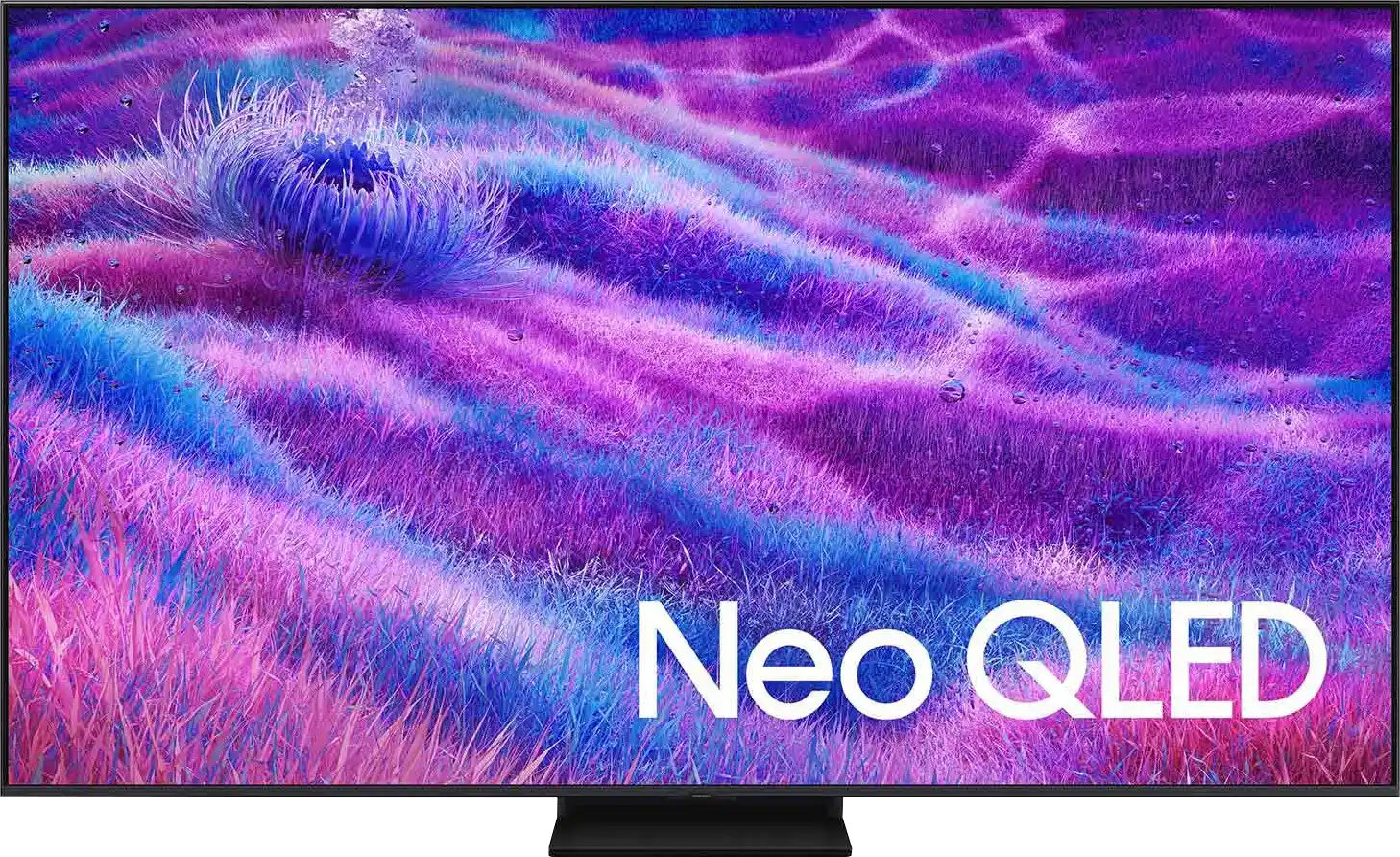
Panel type: LCD VA
Resolution: 3840x2160
System: Tizen
Model year: 2024
Complete the survey to find out the result

Panel type: LCD VA
Resolution: 3840x2160
System: Tizen
Model year: 2025
Complete the survey to find out the result

Overall rating
7.0
7.3
Movies and series in UHD quality
6.9
6.9
Classic TV, YouTube
6.5
6.8
Sports broadcasts (TV and apps)
6.2
6.7
Gaming on console
8.2
8.5
TV as a computer monitor
7.6
8.8
Watching in bright light
6.5
6.6
Utility functions
7.8
7.7
Apps
8.7
8.7
Sound quality
5.8
6.7
Complete the survey to find out what fits your preferences
Advantages
Unique design and 'Art' mode – the television fits perfectly into interiors and serves as a digital picture frame
Matte panel – effectively reduces light reflections
Possibility of personalising the television's frames – adapting the appearance to the interior
Dedicated wall mounts included (value approx. 400 PLN) – the television can fit practically flat against the wall
High brightness (650 cd/m²) – excellent visibility even in well-lit rooms
VA panel – decent contrast
Good motion fluidity – 120Hz*
Support for VRR, ALLM and HGiG – a full set of gaming features
Smooth tonal transitions – one of the best results in this category among the tested televisions
One Connect module – minimises cable clutter, ensuring tidiness
Tizen system – responsive, intuitive
*Does not apply to the 43 and 50-inch variants (60Hz)
Impressive blacks and contrast - VA panel combined with MINI-LED backlighting.
Great brightness - up to 1000 nits in HDR
Fast and responsive panel - 144 Hz
Rich support for gamers - 4xHDMI 2.1, VRR, ALLM, GameBar, Game Motion Plus
Very good usability in daylight
Advanced Tizen operating system
Simple operation
PiP function
Disadvantages
Lack of local dimming – affects the quality of black, especially in dark scenes
Average viewing angles – the picture loses quality when viewed from a wider angle
Average sound quality – flat sound without depth
Limited number of HDMI 2.1 ports – only one port supports full 4K@120 Hz
Lack of Dolby Vision – the television only supports HDR10 and HDR10+
No support for DTS format – a limitation when connecting a home cinema
No recording function to USB
Relatively few dimming zones
Issues with the HGiG function (for gamers) – the update removed this option*
Our verdict
The QN80F is the first "eighty" from Samsung to enter the series of televisions with Mini LED backlighting. And it does this very well. Although the number of dimming zones isn't particularly impressive, the quality of black levels is solid, and combined with high brightness, it allows for a very decent picture in HDR content. Additionally, there's a 144Hz panel that ensures excellent motion fluidity, and the set of gaming features – VRR, ALLM, Game Motion Plus – makes the QN80F a model practically designed for those gaming on consoles or PC. The television operates quickly and responsively, and the Tizen system runs like lightning – whether you're searching for apps or switching sources. Is there anything to criticise? Of course, as always – there are shortcomings in the system (like USB recording), there's no DTS support, and Mini LED isn't without its limitations. But the QN80F is a fantastic television for everyday use – versatile, refined, and... with great pricing potential. Because looking at the history of this series, we can expect that this "eighty" will mix things up significantly once it hits the first sensible promotions. At that point, it could be virtually unmatched in its price range – especially if Samsung resolves the minor teething issues.
TV appearance





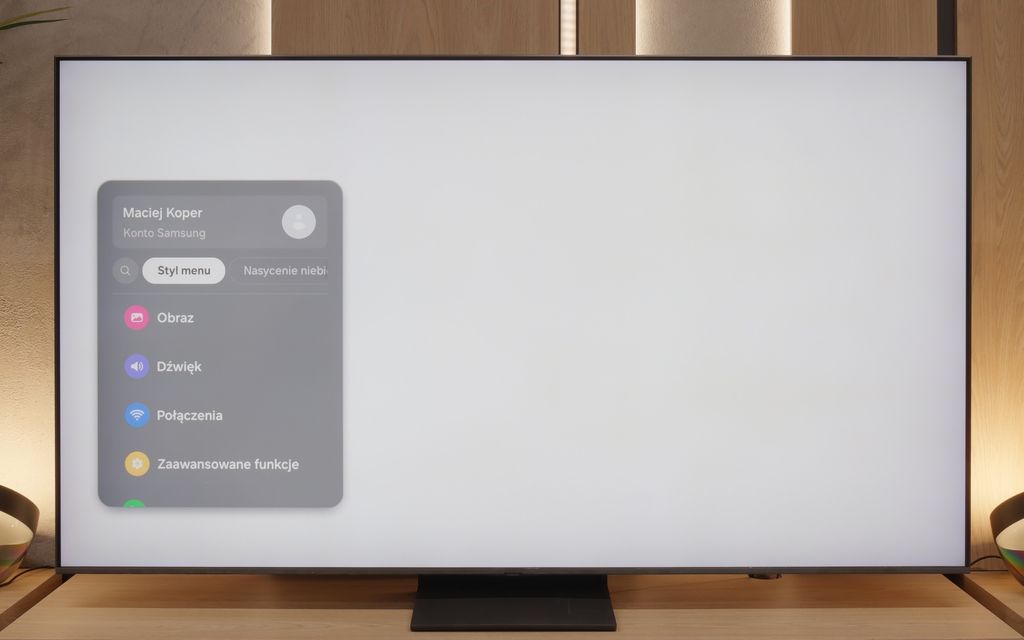
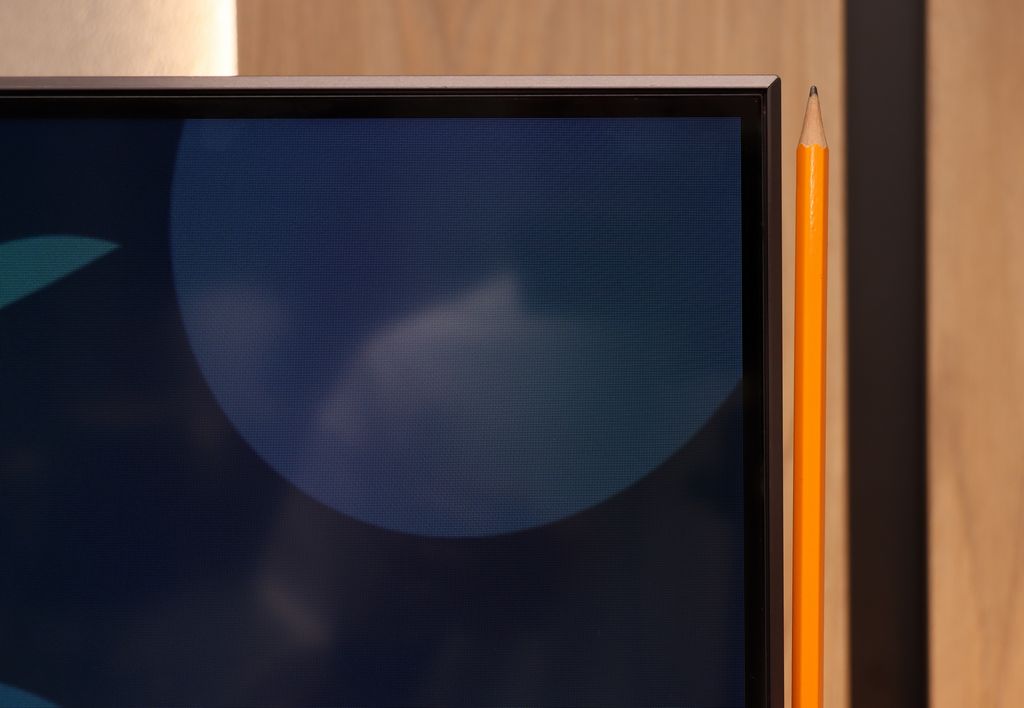
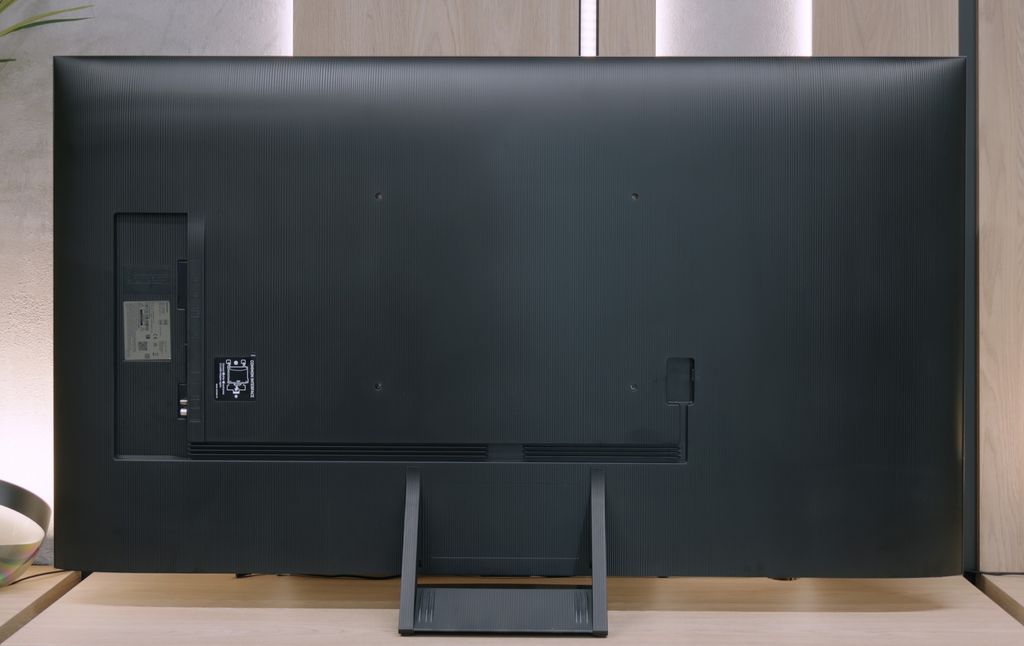
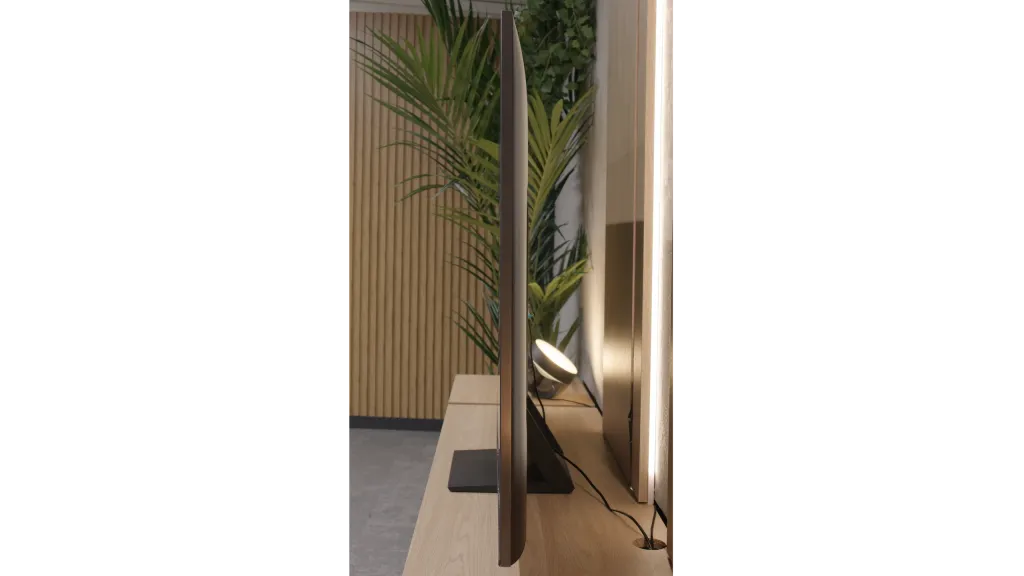
Contrast and black detail
5.6/10
6.8/10
Local dimming function: No
Local dimming function: Yes, number of zones: 88 (8 x 11)
Contrast:

Result
4,200:1

Result
4,800:1

Result
5,100:1

Result
5,300:1

Result
3,850:1

Result
34,100:1

Result
8,200:1

Result
32,500:1

Result
4,550:1

Result
3,800:1
Halo effect and black detail visibility:

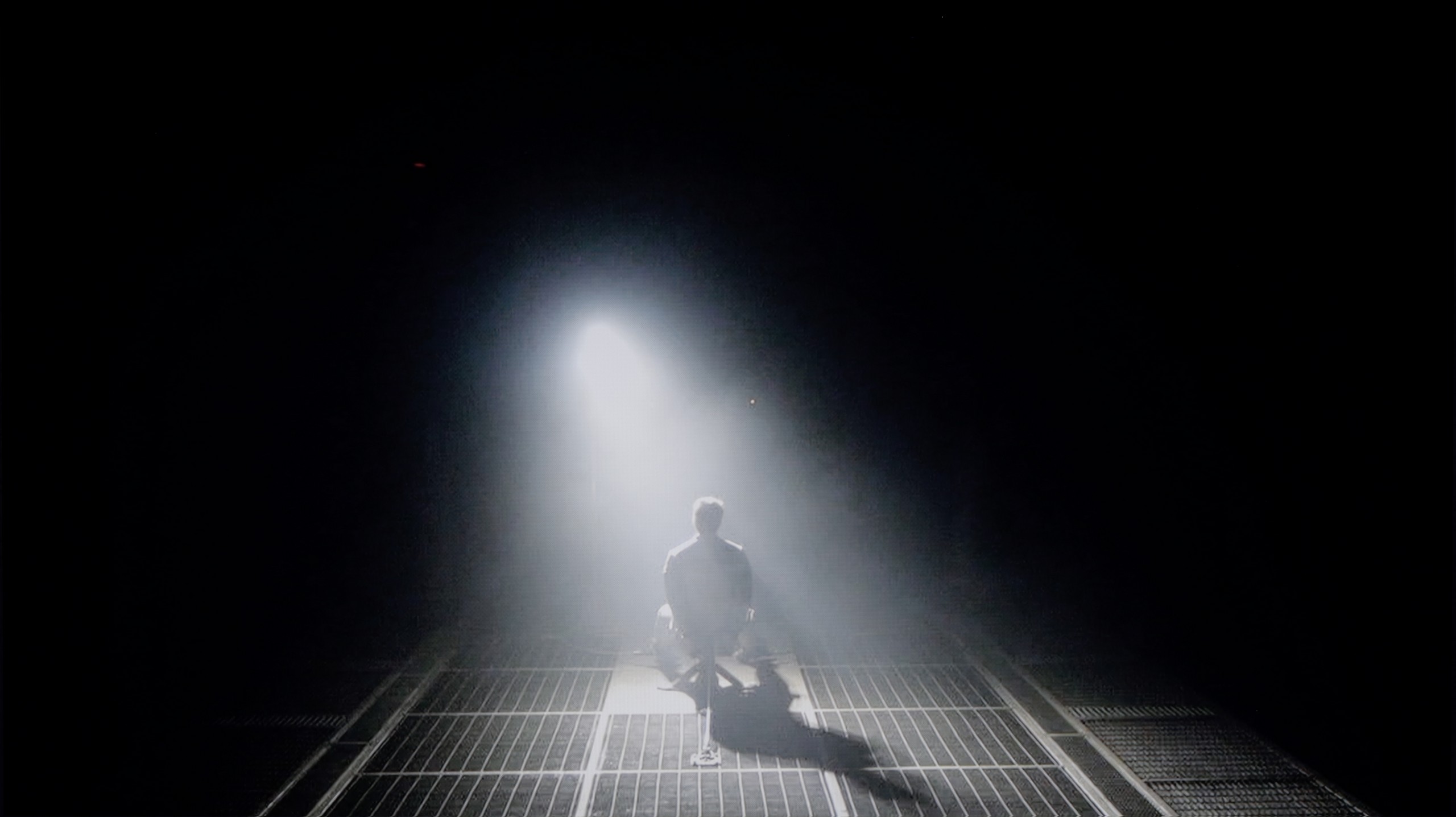
Samsung The Frame uses a VA panel, which in itself provides quite high contrast. In our tests, the results oscillated around 4000–5000:1, which will be more than enough for most users. However, the lack of local dimming is noticeable, especially on more demanding test slides. In dark scenes, it can be observed that black has a subtle hint of navy blue. During the day or in a well-lit room, this will not be an issue, but during an evening viewing, more discerning viewers may feel a slight deficiency.
QN80F is a representative of the Neo QLED series, meaning it is a television with Mini LED backlighting. Unlike its cheaper cousin, the QN70F model, the diodes here are placed directly behind the panel (rather than at the edges), which gives it a solid advantage right from the start when it comes to contrast control. In the 65-inch variant we tested, we counted 88 dimming zones – a result that may not be particularly impressive, but as it turned out, sufficient to achieve quite decent results.
In tests based on scenes from films such as Oblivion and The Meg, the QN80F performed well – blacks were deep, and the overall image consistency was visually appealing. However, in more demanding moments (e.g., scenes with a large number of bright details on a dark background), a halo effect appeared. This is where the limitation of the number of zones becomes evident – bright elements could bleed into one another, and some details in the dark areas lost visibility. In one scene featuring a helicopter (The Meg), we even noticed slight brightness flickering, as if the television was trying its best to maintain detail visibility at the expense of black depth.
However, these issues are not exclusive to this model – halo effects or drops in contrast during very complex scenes are challenges faced by most Mini LED televisions, even the more expensive ones. In its class, the QN80F performs positively and offers significantly better contrast than the QN70F model with edge backlighting. For most users, this will be a level more than sufficient – although not perfect.
HDR effect quality
6.4/10
5.8/10
Luminance measurements in HDR:

Result
679 nit

Result
663 nit

Result
712 nit

Result
698 nit

Result
726 nit

Result
799 nit

Result
533 nit

Result
717 nit

Result
245 nit

Result
656 nit
Scene from the movie “Pan” (about 2800 nits)


Scene from the movie “Billy Lynn” (about 1100 nits)


Static HDR10


Dynamic: HDR10+
Dynamic: HDR10+


HDR luminance chart:
Samsung QN80F
HDR luminance
Samsung The Frame LS03D
HDR luminance
Samsung The Frame LS03D performs really well with brightness. Results of 700 nits make bright elements on the screen look striking and detailed, whether they illuminate the entire screen or appear as small points of light against a dark background. In more demanding scenes, like the fourth sequence from the film Sicario 2, the black levels are average, but we have already discussed this in the section on contrast. As for brightness – the television definitely excels here. An additional advantage is the quantum dot coating, which is QLED technology. Thanks to this, the colour palette coverage has been improved, although The Frame does not stand out in this regard compared to the competition.
QN80F is quite a bright screen – in synthetic tests, it achieved nearly 1000 nits, which allows for justified expectations regarding HDR content. And indeed, in many scenes, the television can truly shine. Sequences with a lot of light – like shots from the film Life of Pi or wide, bright surfaces in The Meg – look impressive. Brightness remains around 700 nits, which provides a solid effect, sufficient to feel the true "HDR magic." Unfortunately, not every scene looks that good. In materials with small, bright details on a dark background, such as in Sicario 2, the television has issues – it can significantly dim certain elements, sometimes to the point where they disappear from the image. This is the result of a limited number of dimming zones, which forces the device to make compromises: either maintain inky blacks or sacrifice some detail. QN80F usually chooses the former. As a consolation, there is quite decent coverage of a wide colour gamut – DCI-P3 at 93%. This is not the highest score on the market, but it is more than adequate for most content on streaming platforms.
Factory color reproduction
7/10
6/10


Factory Mode
After calibration


Factory Mode
After calibration
Samsung offers several picture modes on its televisions, but undoubtedly the Filmmaker Mode is the one that should provide the most natural representation of content. Unfortunately, as is often the case with mass production, the differences between units can be considerable, and our tested model was not free from a few issues.
In the case of SDR content, the white balance leaned heavily towards red, with a slight boost in blue. This effect was particularly noticeable in comparison images – for example, in a photograph of a boy whose face was unnaturally flushed. The gamma, or brightness characteristic, also did not perform perfectly – the image was slightly brightened, which detracted from its depth.
In 4K HDR content, the white balance was again dominated by red, this time in combination with green. Meanwhile, blue clearly lost intensity, which was easy to notice on the Color Checker palette, where colours began to "drift" in the wrong direction. The EOTF curve, responsible for brightness in HDR content, showed that the television has a tendency to excessively brighten the image, especially in the darkest elements of scenes.
Overall, while it did not look terrible, it definitely required adjustment. Fortunately, Samsung offers extensive calibration options, which provides the chance for a significant improvement in image quality. Therefore, we proceeded with professional calibration to extract the full potential from this television.
We test televisions always in the best available factory mode – in the case of the Samsung QN80F, this is the Filmmaker mode, and indeed, it is this mode that offers settings closest to the creators' intentions. However, this does not mean that everything looks perfect. In SDR content, the biggest problem turned out to be an unbalanced white balance – slight deficiencies in green and a noticeable excess of red led to discernible colour errors, one could even say a pinkish tint on the screen. This was well demonstrated in the colour checker test, where the colours 'escaped' beyond their target fields – to the extent that even a sensitive viewer's eye could catch this without the aid of a meter.
In HDR content, the white balance was much better, but another issue arose – brightness management. The EOTF curve resulted in an overly bright image for most of the time, which could affect the perception of contrast and caused the screen to subtly 'flicker' during dynamic light changes. We have already written more about this in the paragraphs on black levels and HDR. Fortunately, Samsung leaves the user with plenty of options. The QN80F offers a rich set of calibration options, including a 20-point white balance – therefore, we decided to check what this television is really capable of after proper calibration.
Color reproduction after calibration
8.1/10
8.3/10

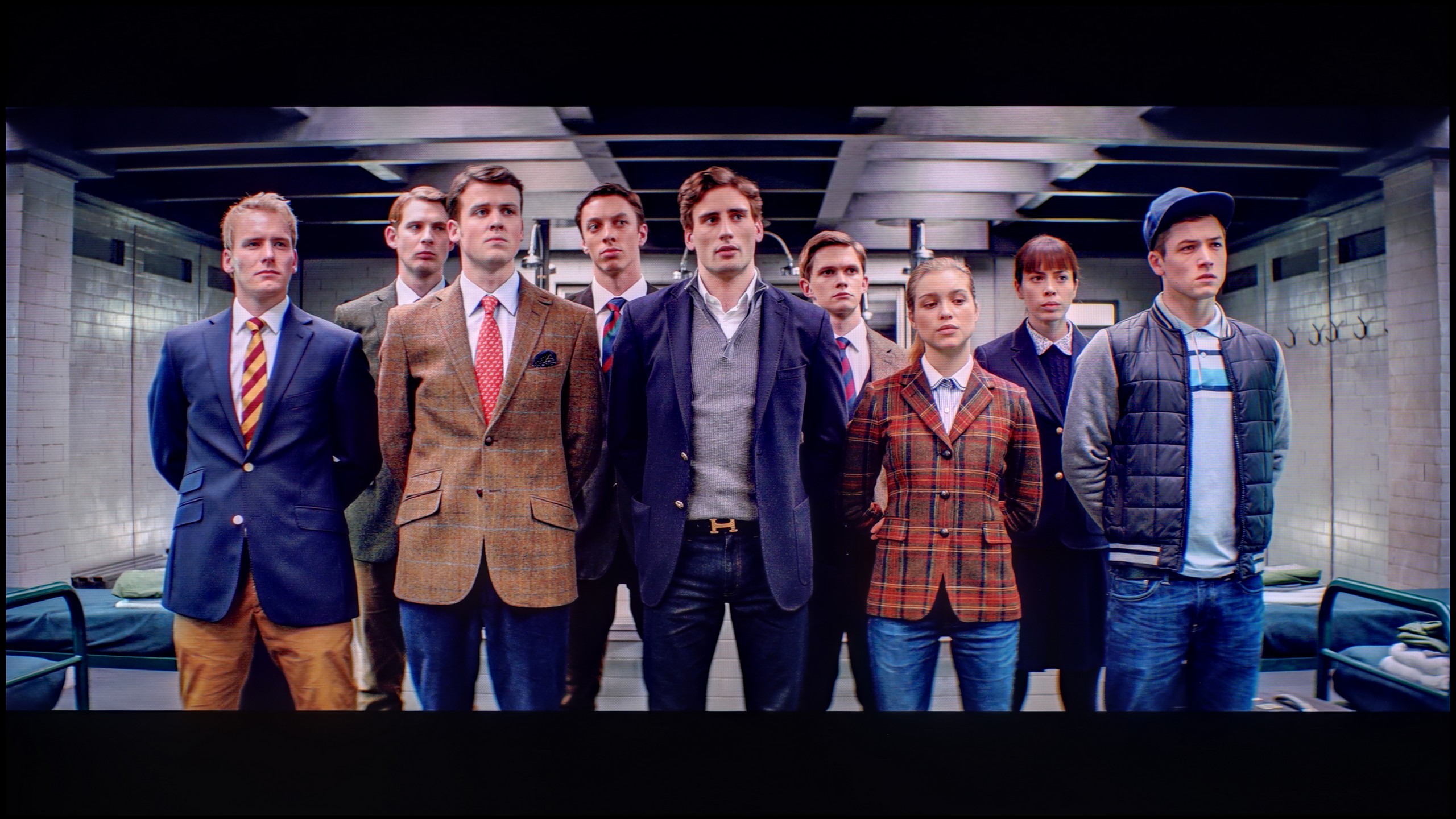


After professional calibration, the Filmmaker Mode shows its full potential. The white balance in HD content is exemplary – errors at the level of 0.5 indicate almost perfect colour reproduction accuracy. The image now looks natural, and the colours are precisely as they should be. In 4K HDR content, the effect is not quite as perfect, but it still maintains a really high level. The colours are vibrant, well-saturated, and the overall picture quality can be impressive.
So where does the problem arise, given our praise for colour reproduction? Unfortunately, the entire experience is marred by brightness characteristics. The gamma in HD content looks decent, but in 4K HDR it's not as good. The EOTF curve shows that the television excessively brightens certain parts of the image, which is a result of construction limitations. The lack of local dimming means that the television cannot accurately control the differences between the brightest and darkest areas of the screen. This is a barrier that simply cannot be overcome in this model.
Nonetheless, after calibration, Samsung The Frame LS03D offers excellent colour reproduction, particularly in HD content, and the overall appearance is considerably better than before the settings were corrected.
After conducting a thorough calibration, it was possible to bring most of the image parameters to a really good level. The white balance in both SDR and HDR is nearly perfect – the picture is natural, neutral and devoid of the previously noticeable redness. The colours have gained depth, and the overall visual reception has become more pleasant and cohesive. It was also possible to partially master the brightness management, which in the factory version could be problematic. The EOTF chart shows that the television performs significantly better with brightness after calibration – there is no longer excessive dimming of certain elements. In films, it can still be noticed that the QN80F has a tendency to slightly brighten the smallest, light details – however, this is the effect of the device's design and the limited number of dimming zones. In short: not everything can be overcome, but what could be has been improved. After calibration, the QN80F makes a really good impression; it simply looks more mature and professional.
Smoothness of tonal transitions
9.7/10
9/10

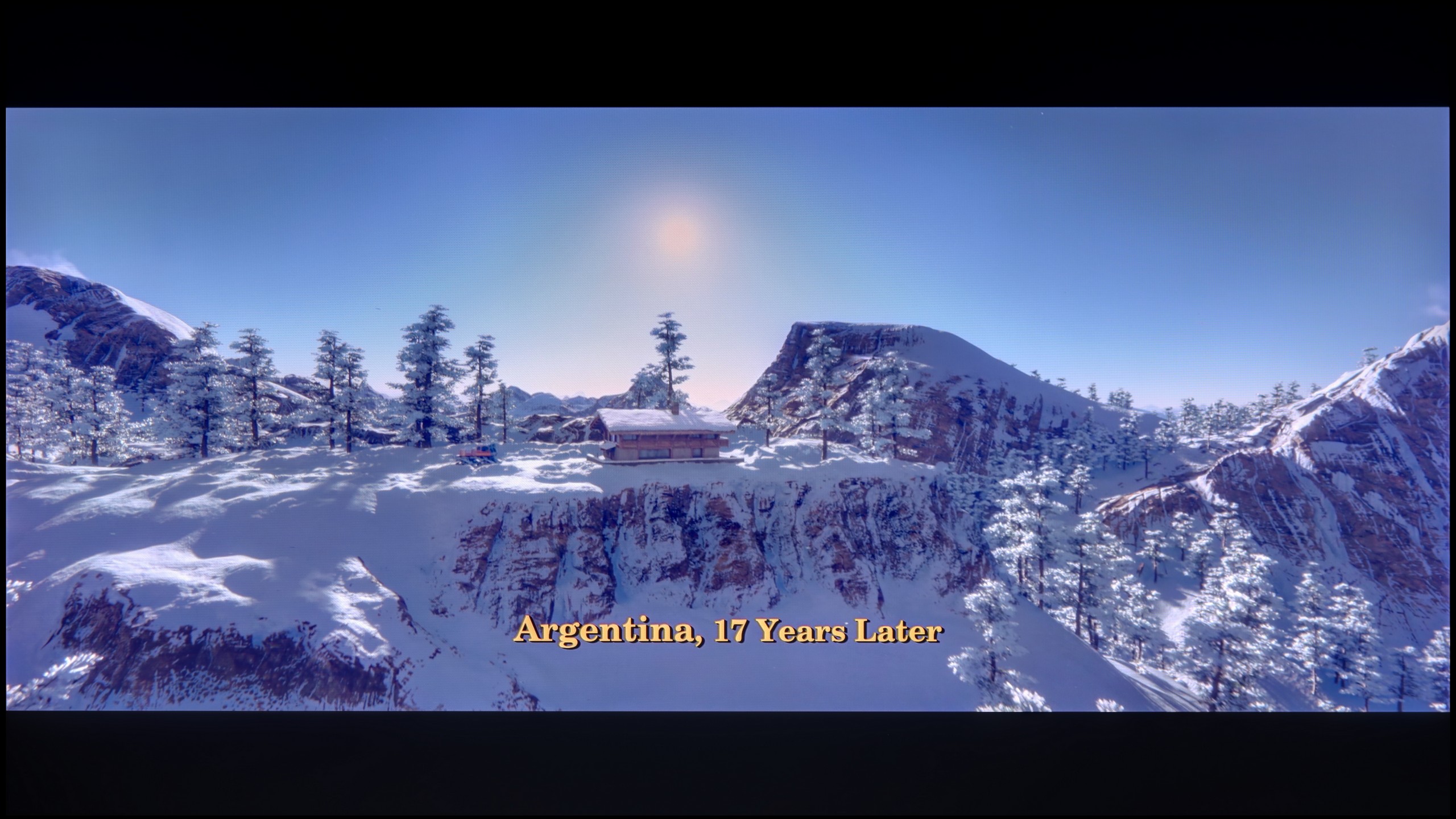



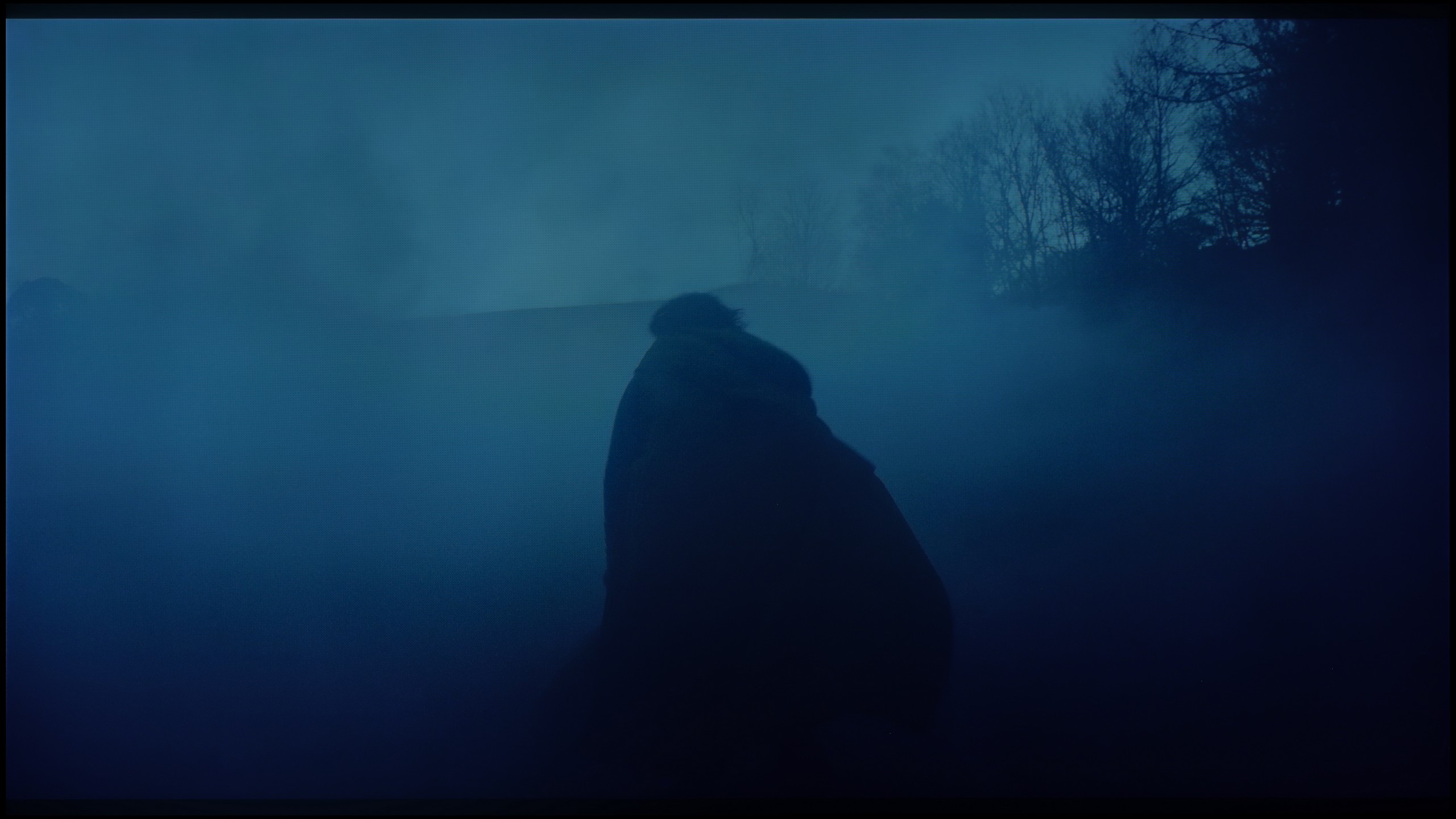

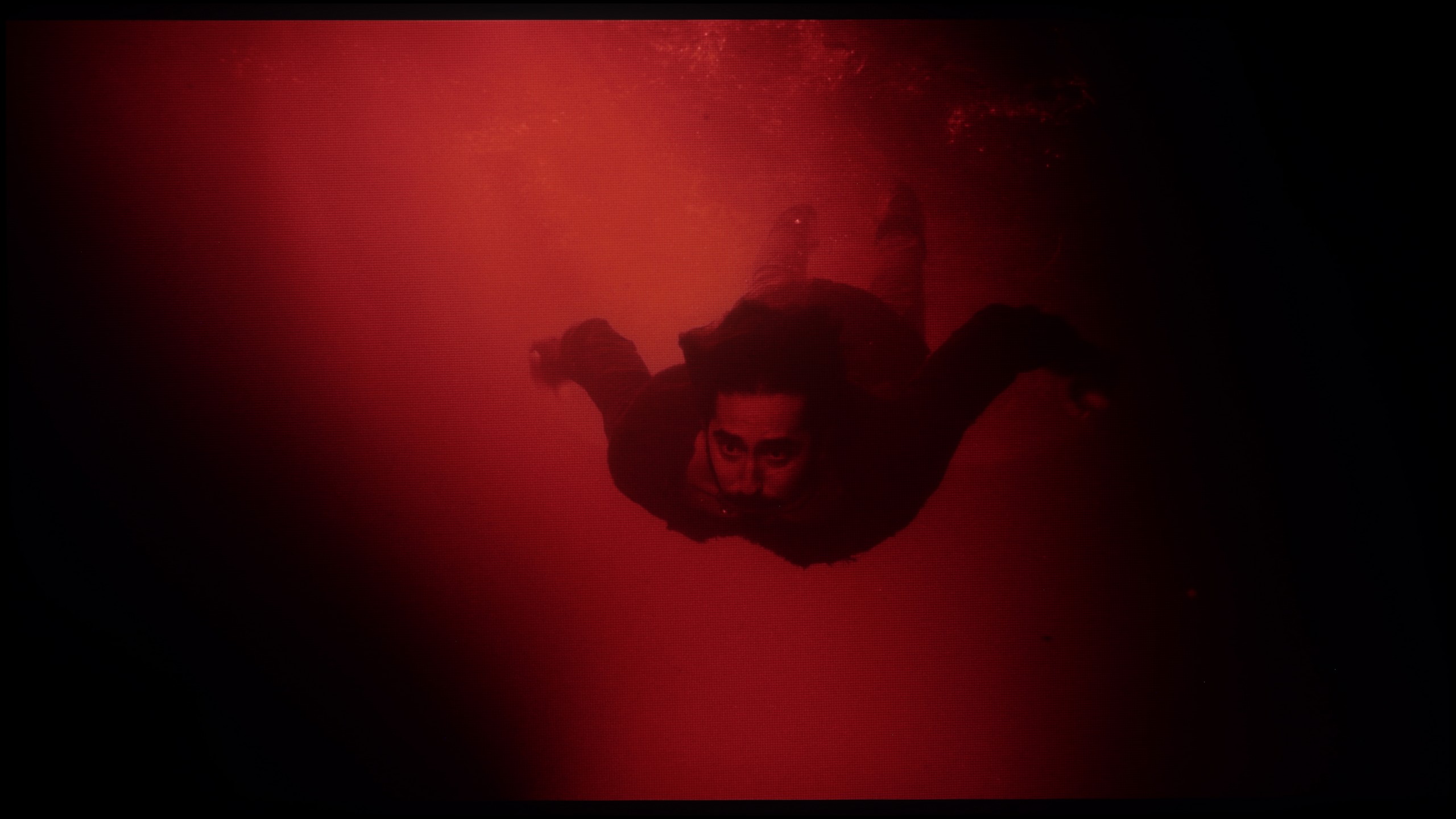




This is one of the best televisions we have had the opportunity to test in terms of the smoothness of tonal transitions. Any potential imperfections are so minor that you really have to strain your eyes to notice them. They are subtle enough that we only deducted a symbolic fraction of points in this category. Without a doubt, this is one of the greatest advantages of this model. It is possible that such a good effect is partly due to the matte screen coating, which gently masks any irregularities in the colour gradation. The smoothness of tonal transitions in Samsung The Frame LS03D is at a level that will satisfy even exceptionally demanding users. Kudos to LS03D!
In this respect, the QN80F truly impresses. The transitions between colours are smooth, nothing is torn, and there are no annoying stripes in the sky or strange blotches in the shadows. Film scenes in darker tones performed particularly well – and this is where most televisions tend to struggle. If one is very determined, they may notice slight banding in the brightest sections, but that is really stretching for an issue. In everyday viewing, no one should have a problem with this. To put it plainly: the tonal transitions are so good that one can forget about them – and simply enjoy the film.
Image scaling and smoothness of tonal transitions
7.1/10
7/10
Smooth transition function

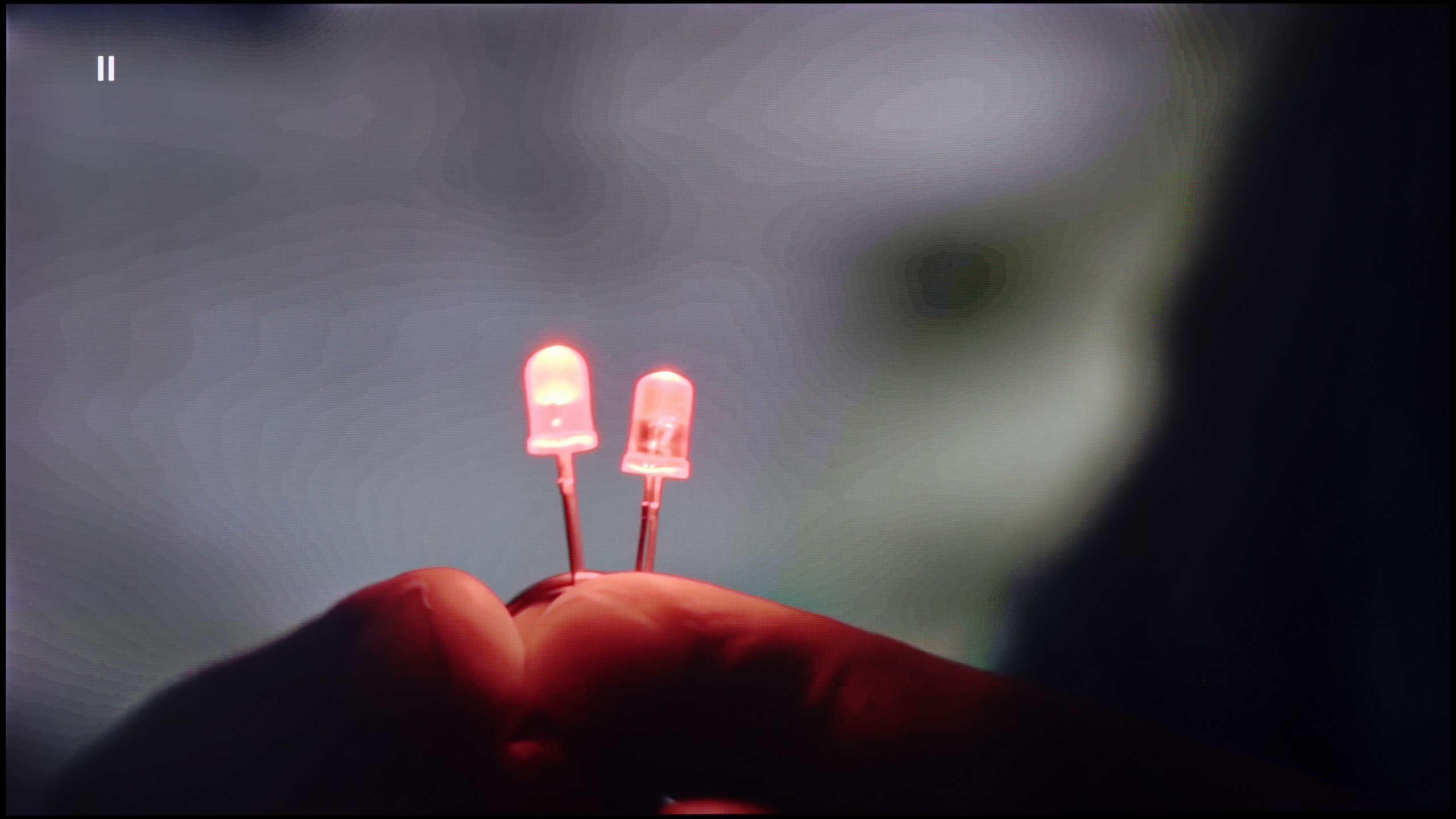
Image without overscan on the SD signal

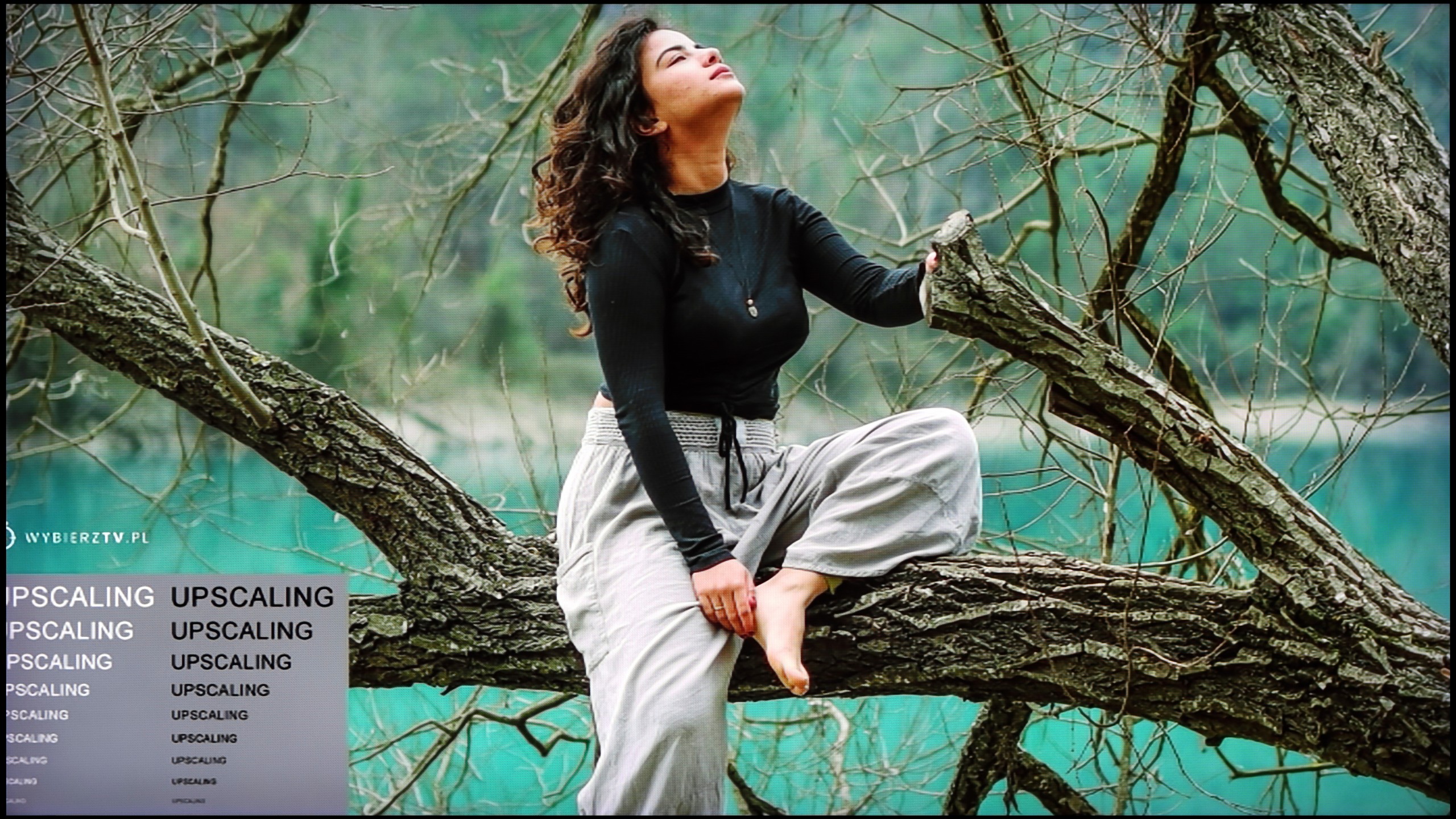
It’s time to check how Samsung The Frame LS03D performs with older, lower-quality materials. We already know that the fluidity of tonal transitions is at a very high level here, so we were curious to see how the television would handle smoothing them out.
The noise reduction feature in the "Standard" setting does its job well – tonal transitions are noticeably smoothed out, and at the same time, the image does not lose too much detail. However, it is worth noting that this effect also smooths out film grain, so its use will be a matter of individual preference.
When it comes to image scaling, the television also performed really well. The test chart turned out solid – the model was reproduced correctly, with clear details. The branches in the background, though slightly frayed in places, generally appear natural and do not stand out as imperfections.
If, while watching lower quality materials – for example from YouTube – we notice strange colour transitions or unwanted artefacts, it's worth checking the settings and turning on the noise reduction feature. In our opinion, the best setting is at “medium” – it effectively smooths out problematic colour transitions while not blurring the entire image too much. However, one must know this: this option tends to remove film grain. If someone cares about preserving this effect (e.g. in older films), it’s better to simply turn it off – regardless of the level, the grain always disappears.
When it comes to resolution scaling (or so-called upscaling), Samsung – as usual – performs very well in this area. The QN80F may not compete with top models costing tens of thousands, but for its price class, it really does impress. Materials of very low quality (e.g. from SD television or older video files) are noticeably improved and look surprisingly decent. The only noticeable drawback is the typical Samsung issue with overscan – that is, slight cropping of the image edges in very low resolutions, e.g. 576p.
Blur and motion smoothness
6.4/10
7.5/10

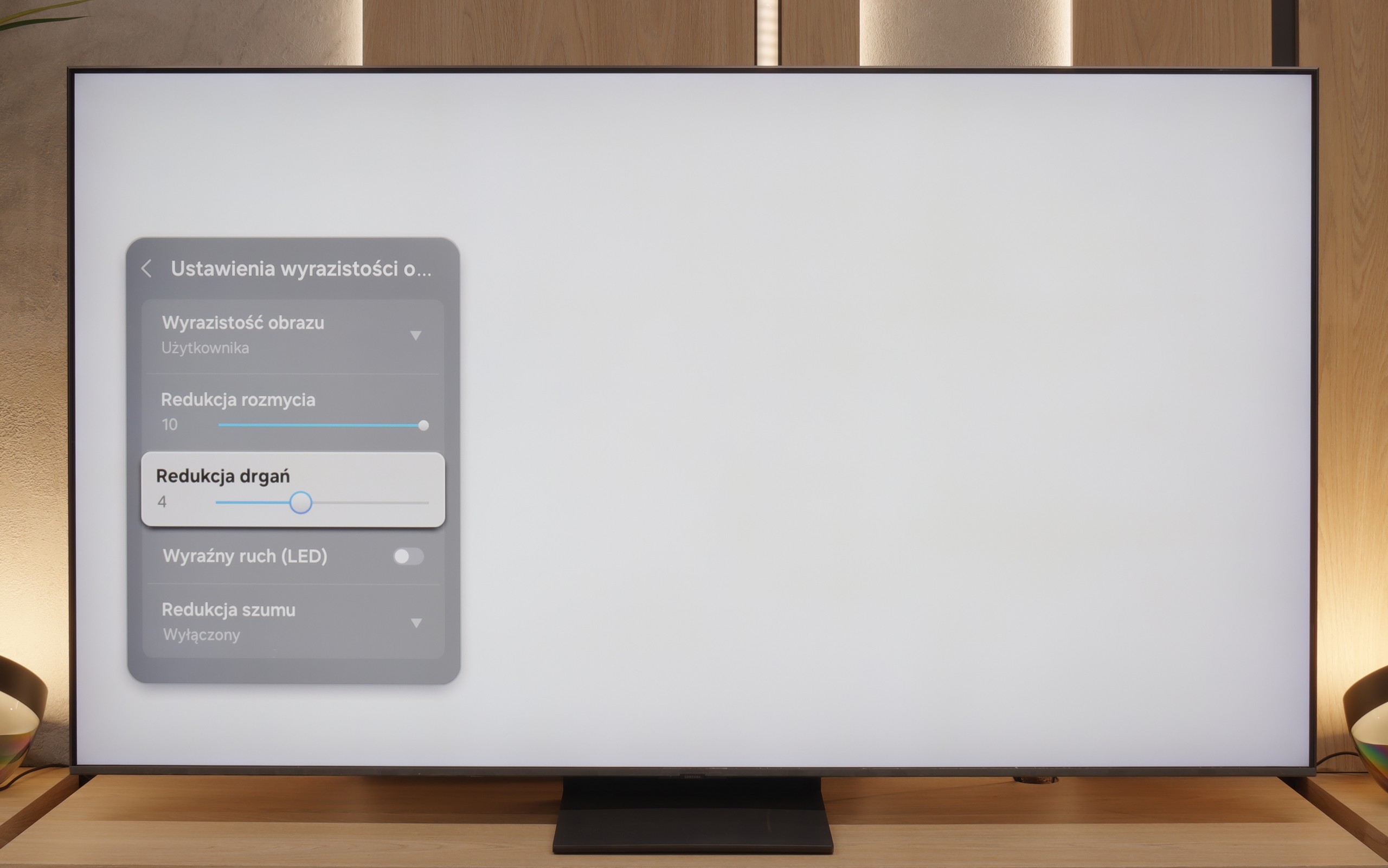
Blur (native resolution, maximum refresh rate):



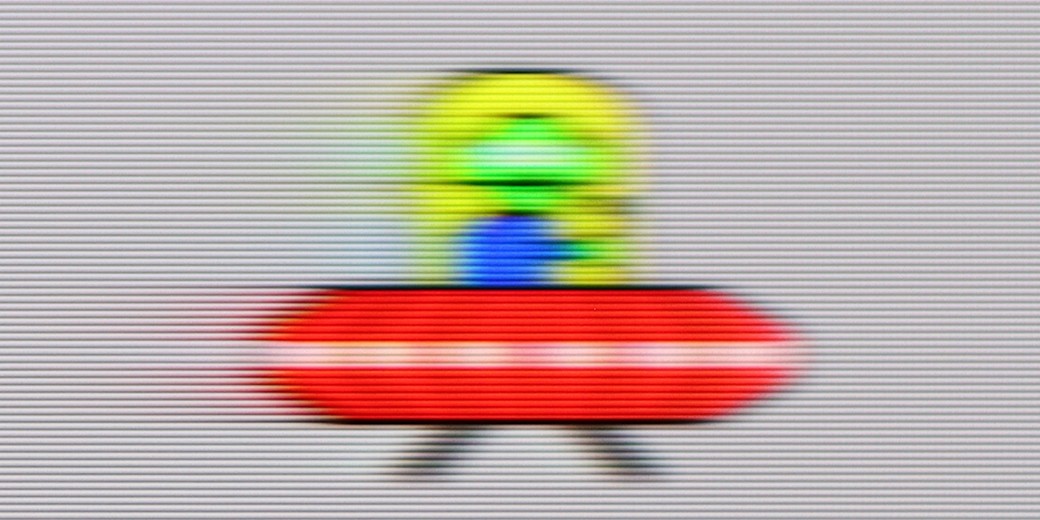
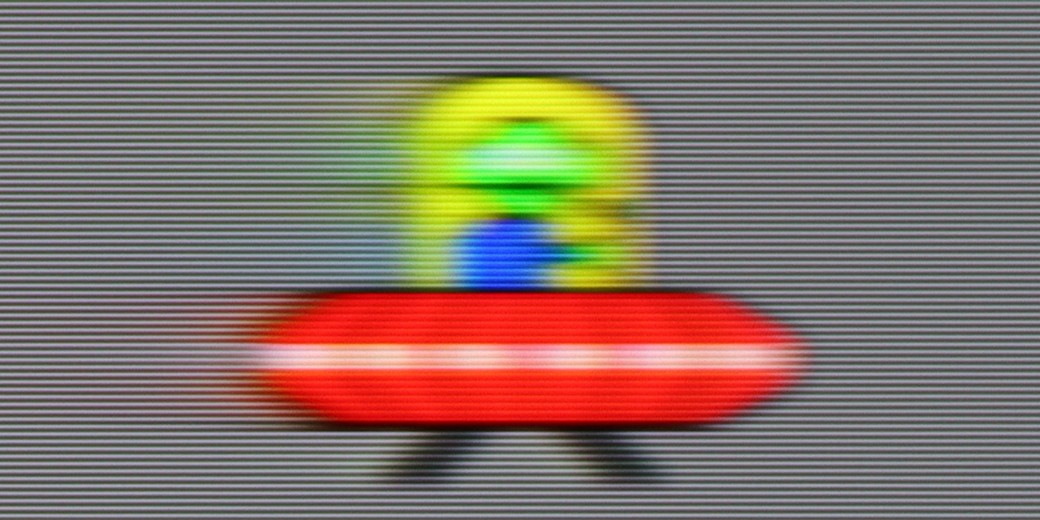

Blur (BFI function enabled):
Image flickers in this mode
Image flickers in this mode

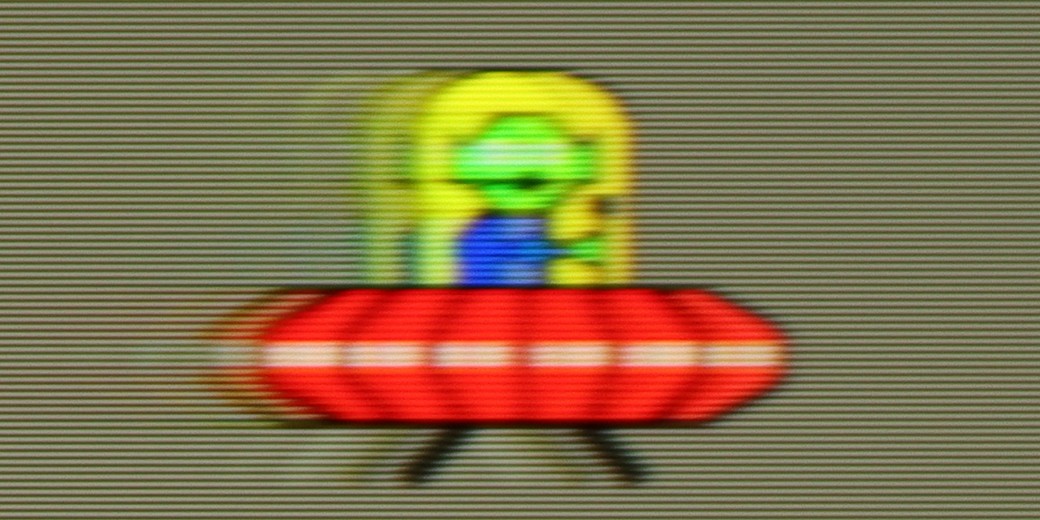
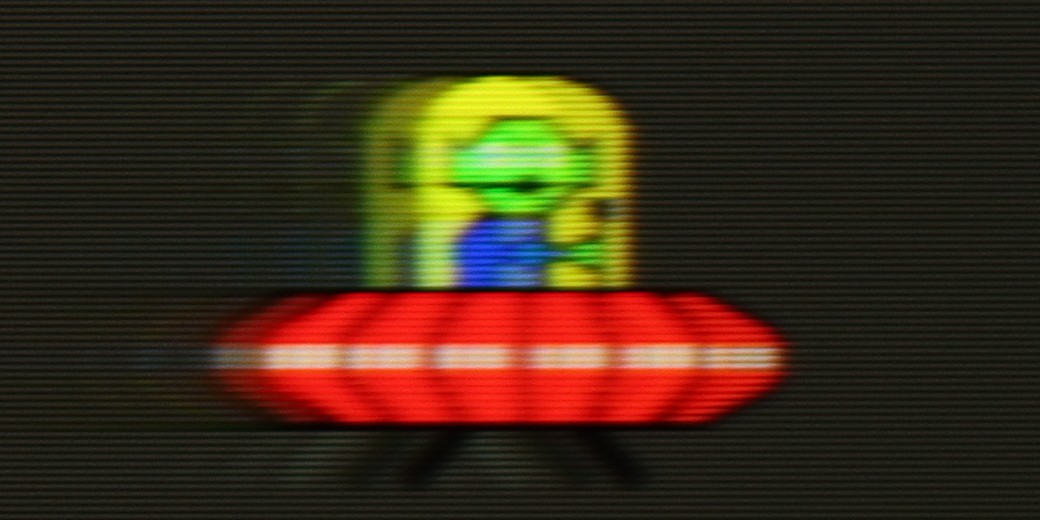
Firstly, it is worth noting that the model we tested in the size of 55 inches, like the 65, 75 and 85-inch versions, is equipped with a 120 Hz panel. Unfortunately, the 43 and 50-inch variants of this series only offer 60 Hz panels, which is worth keeping in mind when making a purchase. As for improving motion fluidity, the television offers a feature called “Picture Clarity”. This is a classic motion smoother that gives users the ability to adjust it using two sliders:
Motion blur reduction – this controls the sharpening of the image in dynamic scenes. The higher the value, the less blur during quick camera movements or moving objects. However, overly aggressive settings may cause the image to become unnatural, appearing like a “soap opera”.
Judder reduction – this slider influences the smoothness of frame playback, particularly in materials with a lower frame rate, such as films (24 fps). Higher settings can smooth motion but may also lead to excessive “plasticity” of the image.
Both sliders operate on a scale from 0 to 10, allowing for precise adjustment of the effect to one’s own preferences. It is worth experimenting with the settings to find the perfect balance between fluidity and a natural appearance of the image. We recommend setting them as shown in the picture.
QN80F is truly a "fast" television. The applied panel offers a refresh rate of up to 144 Hz, which in practice means that the screen keeps up with the action – whether we're watching a film, playing games, or browsing dynamic content online. The image doesn’t stutter, isn’t excessively smeared, and overall looks simply smooth and pleasing to the eye. Of course, the manufacturer hasn’t forgotten about cinema fans – in the settings, we’ll find an option to adjust motion smoothness, allowing us to tailor the effect to our personal preferences. We can maintain a more "framey" appearance (for those who enjoy the classic cinematic vibe) or ramp up the smoothness to a higher level for a theatrical smoothing effect. Importantly, the choice is ours. Watching films and playing on the QN80F is simply a delight.
Console compatibility and gaming features
8.8/10
8.2/10
- ALLM
- VRR
- VRR range48 - 120Hz48 - 144Hz
- Dolby Vision Game Mode
- Correct implementation of HGIG
- 1080p@120Hz
- 1440p@120Hz
- 4K@120Hz
- Game bar

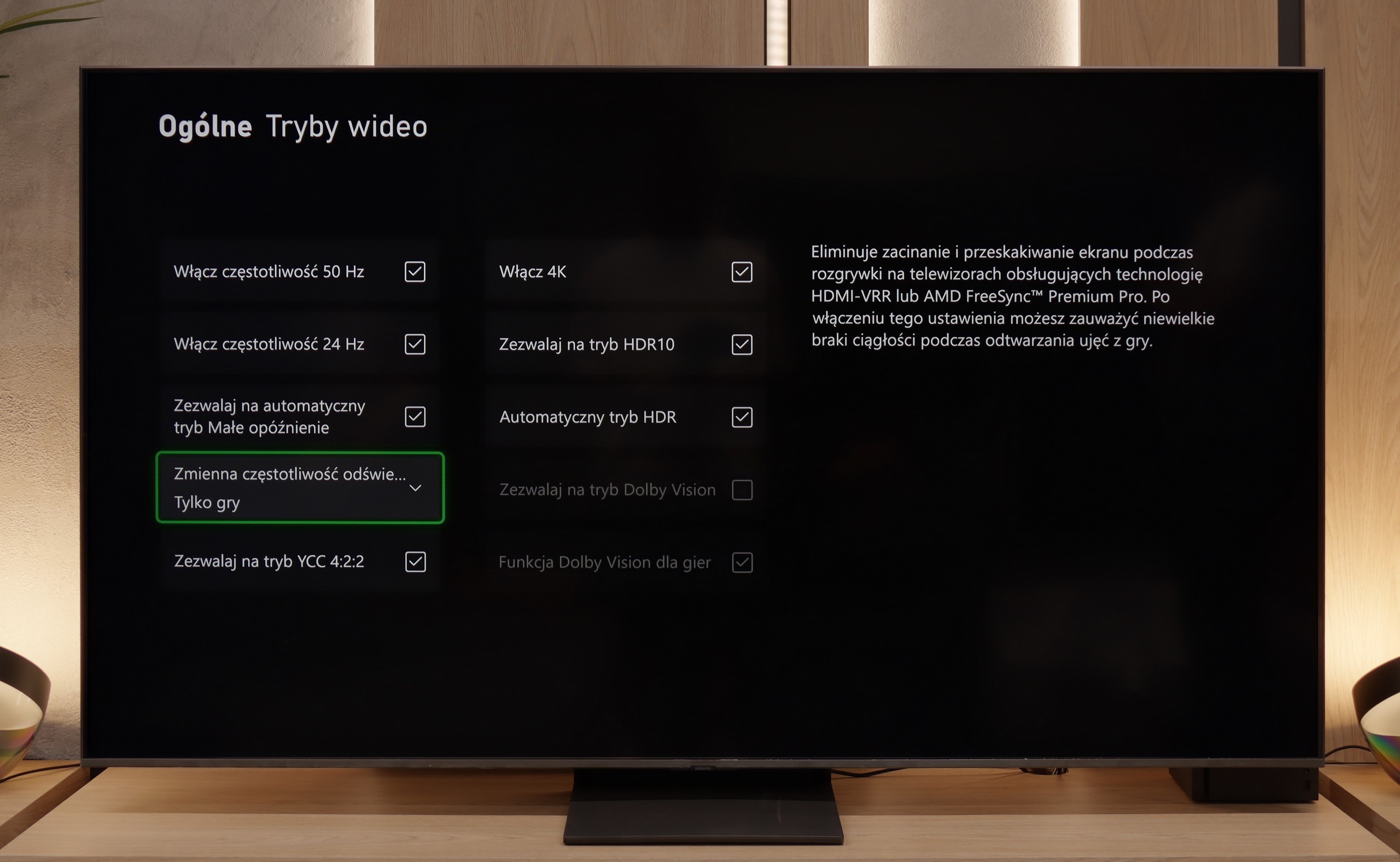

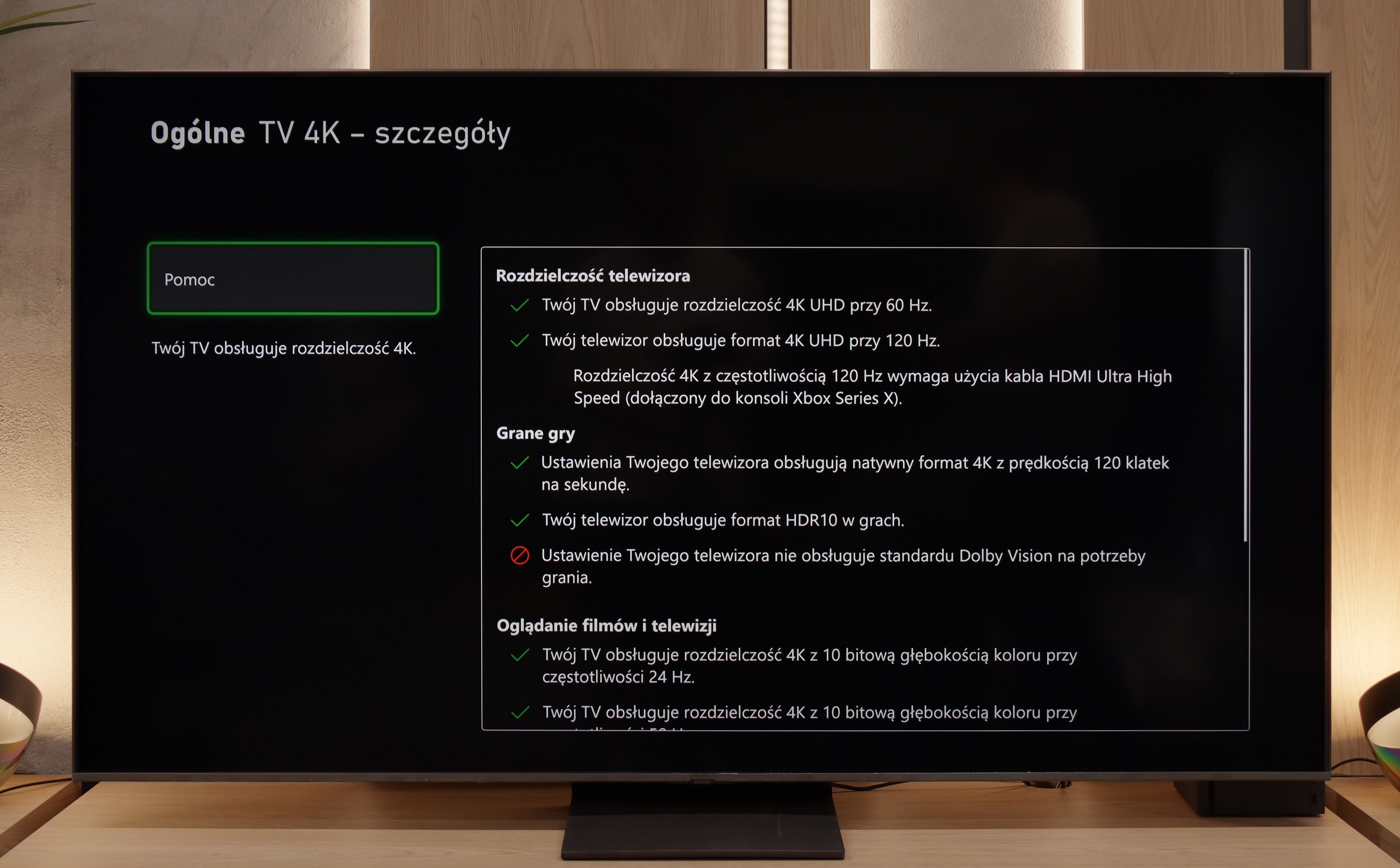

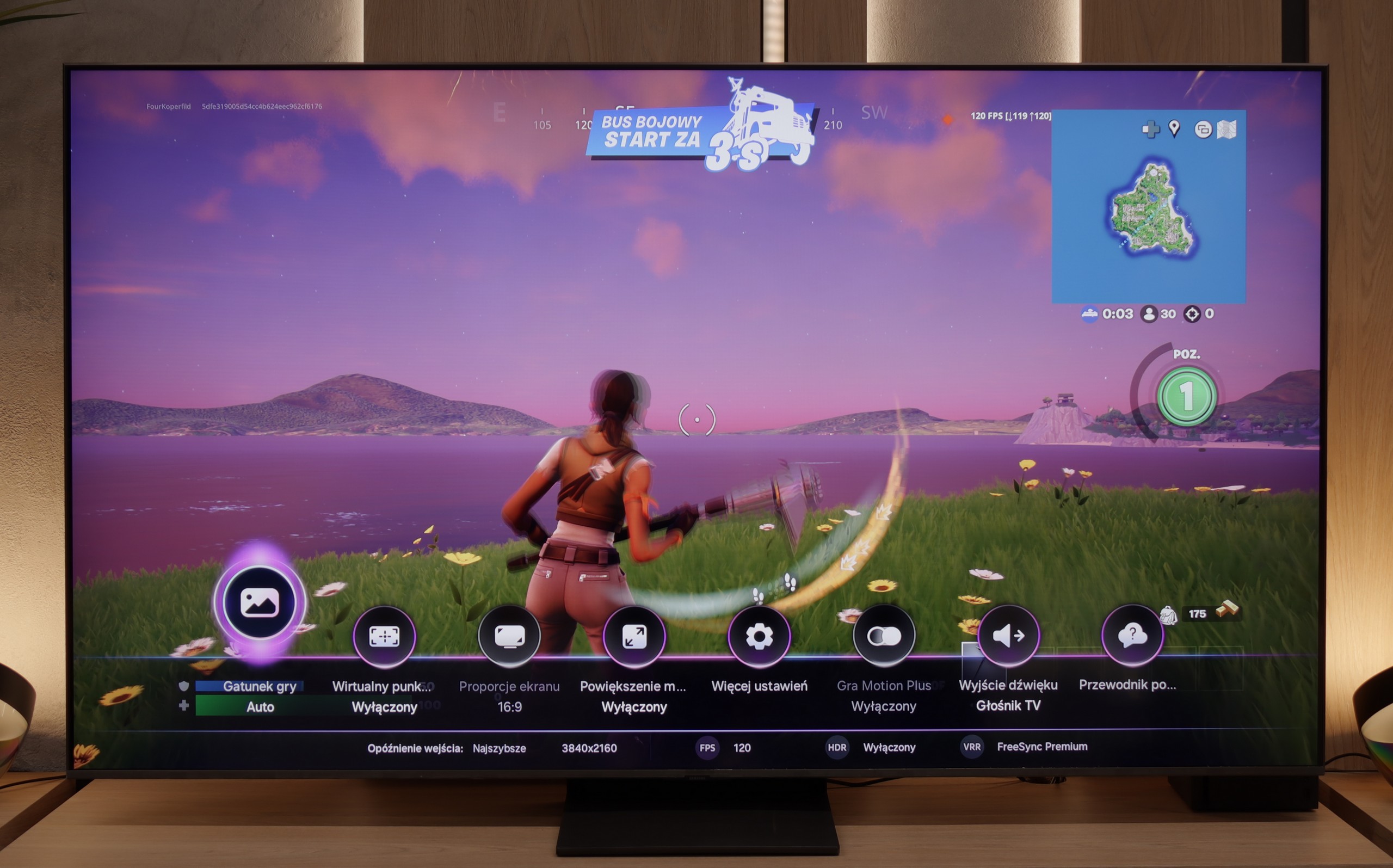

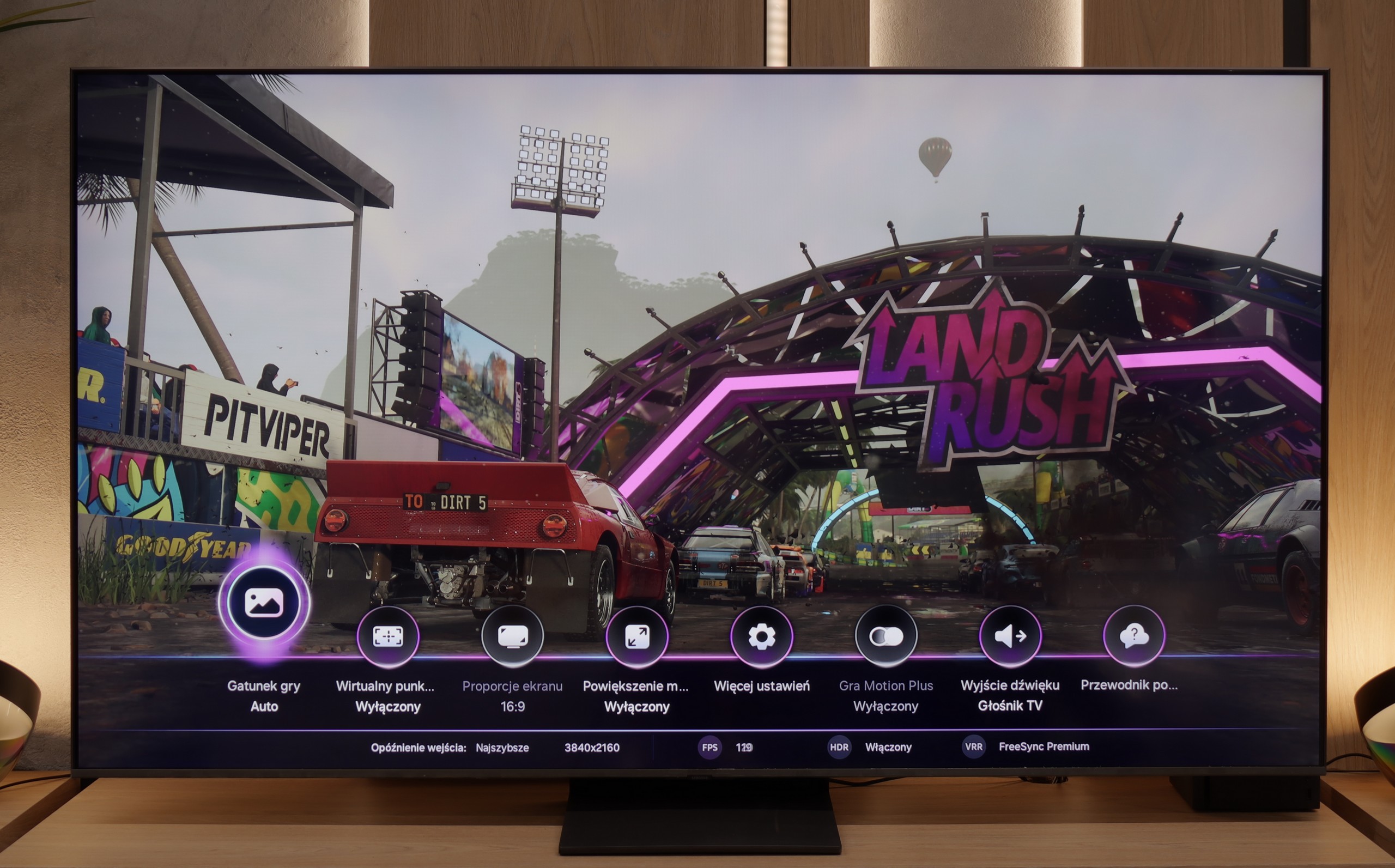
The Frame LS03D in the 2024 version has been equipped with four HDMI ports, but only one of them supports the 2.1 standard with a bandwidth of 40 Gb/s. This is important information if we plan to connect more than one device that requires a 4K@120 Hz signal – for example, two consoles or a console and a gaming PC.
In terms of features for gamers, The Frame truly has a lot to boast about. Here we find ALLM (Auto Low Latency Mode), VRR (Variable Refresh Rate), and HGiG. It is worth highlighting that HGiG has been very well implemented here, which is particularly important as the television does not support Dolby Vision in games (which is only available on Xbox consoles). In this case, HGiG turns out to be a better standard for gaming.
Samsung has also not forgotten about features that enhance gaming comfort. Game Bar is an advanced panel for gamers that allows for quick adjustment of screen settings without the need to dig through the television's menu. We can even change the aspect ratio from 16:9 to a panoramic 21:9, which may be a significant advantage for some gamers.
However, Samsung's biggest ace up its sleeve is the Game Motion Plus feature. This is a special smoothness enhancer dedicated to games that adds additional frames of animation without significantly affecting input lag. The effect is truly noticeable – the image appears much smoother, which fans of dynamic titles will particularly appreciate.
In summary – Samsung The Frame LS03D is a television that offers a solid set of features for gamers. While the limitation to one HDMI 2.1 port may be a downside, the rest of the solutions makes gaming on this television a truly enjoyable experience.
The Samsung QN80F is a television that delivers on almost every front when it comes to gaming. We have a 144 Hz panel, four full-fledged HDMI 2.1 ports, support for gamers in the form of variable refresh rate (VRR), automatic game mode (ALLM), and even one of the best-designed game bars on the market. The cherry on top is the motion smoother, which – uniquely in the world – works in games without significantly increasing input lag. Sounds like an almost perfect television for gamers? And indeed, it is almost that.
As usual, Samsung does not support Dolby Vision in games, but that no longer surprises anyone. However, it is considerably more surprising that... the HGIG function has disappeared – that is, the system that allows the console (e.g., PlayStation 5 or Xbox Series X) to precisely match HDR tone mapping to the television’s capabilities. In the latest firmware update for the 2025 models, this option has simply vanished. This looks more like a mistake than a deliberate move, but it must be noted fairly that as of the date of writing this review, the HGIG function is simply not available.
And it is precisely because of this one missing feature that the QN80F transforms from an almost perfect gaming television into a “nearly” perfect device. It’s a shame – because everything else suggested that Samsung could once again set the bar very high in this generation.
Input lag
10/10
9.8/10
SDR
HDR
Dolby Vision
In terms of latency, The Frame LS03D is truly impressive. 13 ms for 60 Hz content and 8 ms for 120 Hz are results that will satisfy even the most demanding gamers. Such low values mean that responses to controller movements are almost instantaneous. In dynamic games, such as shooters or racing games, every fraction of a second matters – this is where Samsung LS03D excels.
The QN80F does not disappoint when it comes to response time. The input lag for 120 Hz content drops below 10 ms, which can be considered an almost perfect result – it is hard to expect more in this class of TVs. Gaming is smooth, responsive, and without delays that could annoy even the most sensitive players. For 60 Hz materials, the lag is higher, around 19 ms, but this is a completely natural phenomenon and still falls within comfortable limits.
Compatibility with PC
7.6/10
8.8/10

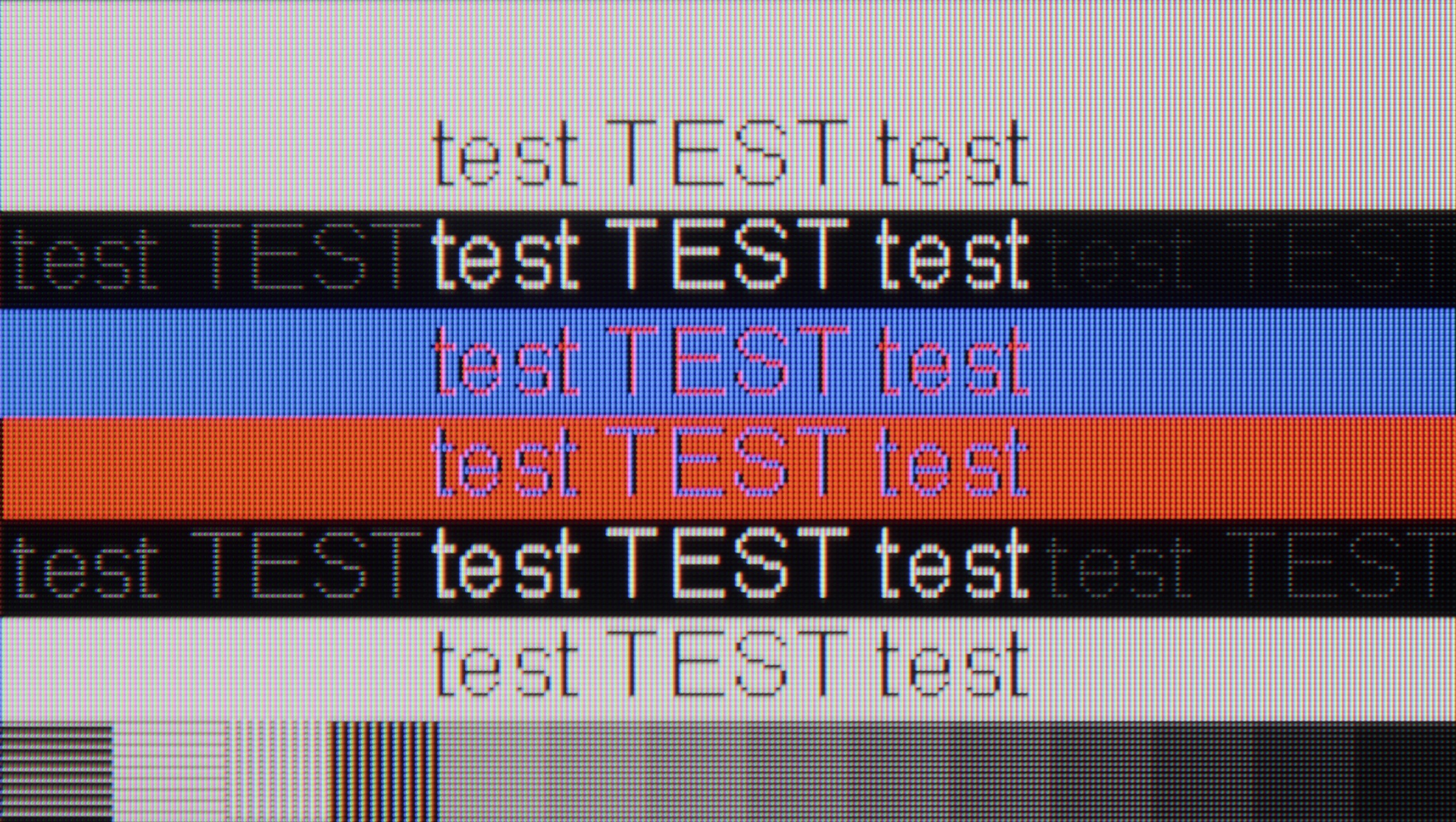
Using a computer on The Frame is truly a pleasant experience. The fonts are clear and well-rendered thanks to support for chroma 4:4:4. There is no blurring or fuzziness, which often occurs in cheaper televisions. Of course, if someone looks very closely at small text, they may notice minimal imperfections, but that's really a minor detail that doesn't interfere with everyday tasks. It is also suitable for PC gaming. The 120 Hz panel, support for G-Sync, and really low input lag ensure that games run smoothly and without delays.
Playing on the QN80F with a connected computer is pure pleasure. The television effortlessly works with NVIDIA graphics cards (thanks to G-Sync support) and AMD (thanks to FreeSync Premium), and the 144 Hz refresh rate only enhances comfort during dynamic gameplay. Everything works immediately, without unnecessary fiddling with settings – exactly as it should.
When it comes to work, it is also very good. The readability of fonts is at a high level, and texts appear sharp and clear. With very thin horizontal lines, some minor imperfections in shading can be noticed, but honestly – you really have to look closely. Unless, like us, you sometimes enjoy looking at the screen with a magnifying glass… then you might spot something 😉.
Viewing angles
3.3/10
3.1/10
The viewing angles of the Samsung The Frame LS03D are average, which is typical for a VA panel. Here lies a bit of a problem – this television is supposed to serve as a display for images and works of art, which are not always viewed head-on. When viewed at an angle, colours begin to lose their intensity, and blacks turn into shades of grey. This is not at a level that completely ruins the experience, but if the television is to be placed where it will often be viewed from the side, the effect may be noticeable. It's a shame, as better viewing angles would be a significant advantage for a television of this purpose.
QN80F, like most TVs with a VA panel, does not impress in terms of viewing angles. All it takes is a slight lean to the side to notice a significant drop in brightness and lost colour saturation. The picture loses its "depth" and "vibrancy", and darker scenes may appear slightly washed out. However, this is a typical characteristic of VA panels, which provide significantly better native contrast than IPS panels in return. In short: something for something. If you are sitting directly in front of the screen, there will be no problem. But when watching together in a larger group, it is worth keeping this in mind.
TV efficiency during daytime
6.5/10
6.6/10

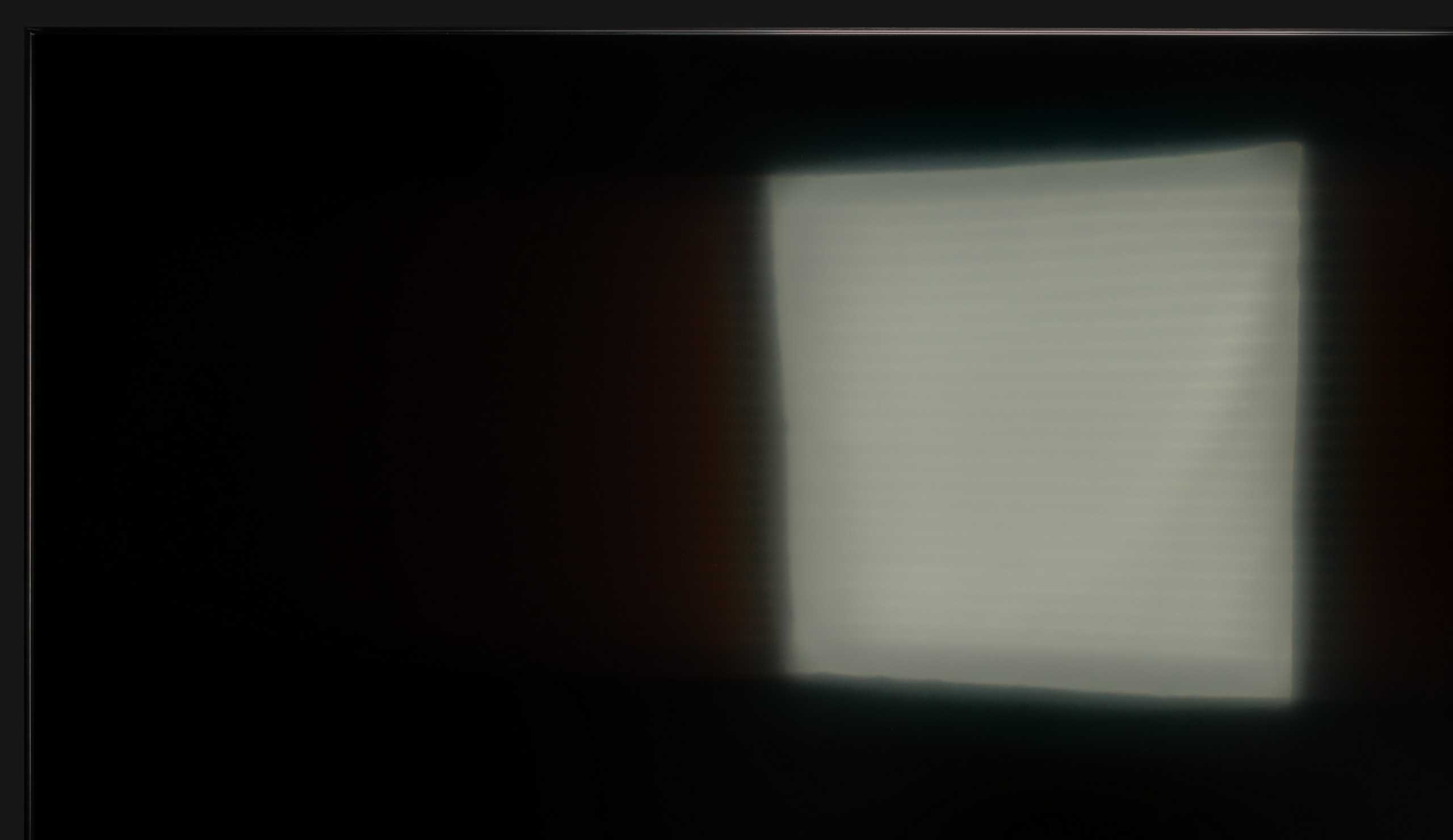


Matrix brightness
Average luminance SDR
Samsung QN80F: 543 cd/m2
Samsung The Frame LS03D : 645 cd/m2
Samsung The Frame is equipped with a matte panel that excels at suppressing direct light reflections. This means that even in a brightly lit room, the image remains clear, and reflections do not interfere with viewing. Of course, as is often the case with matte finishes, there is a trade-off – colours lose some intensity, and black may appear more washed out during the day. Fortunately, the television compensates for this with a brightness level of 650 cd/m². This ensures that the image is bright, clear, and well visible even in a heavily sunlit room.
The QN80F is truly a bright television. The average brightness in SDR content is around 550 nits, regardless of the scene, which in practice means that you can comfortably watch content even in a well-lit room – and you don’t have to close the blinds every time you turn on a film. The new satin coating on the panel also deserves praise, as it performs significantly better at reducing reflections compared to last year’s QN80D. Glare is less bothersome, and the screen maintains readability in various lighting conditions. It’s hard to find fault here – the QN80F performs simply excellently during the day.
Details about the matrix
Subpixel Structure:

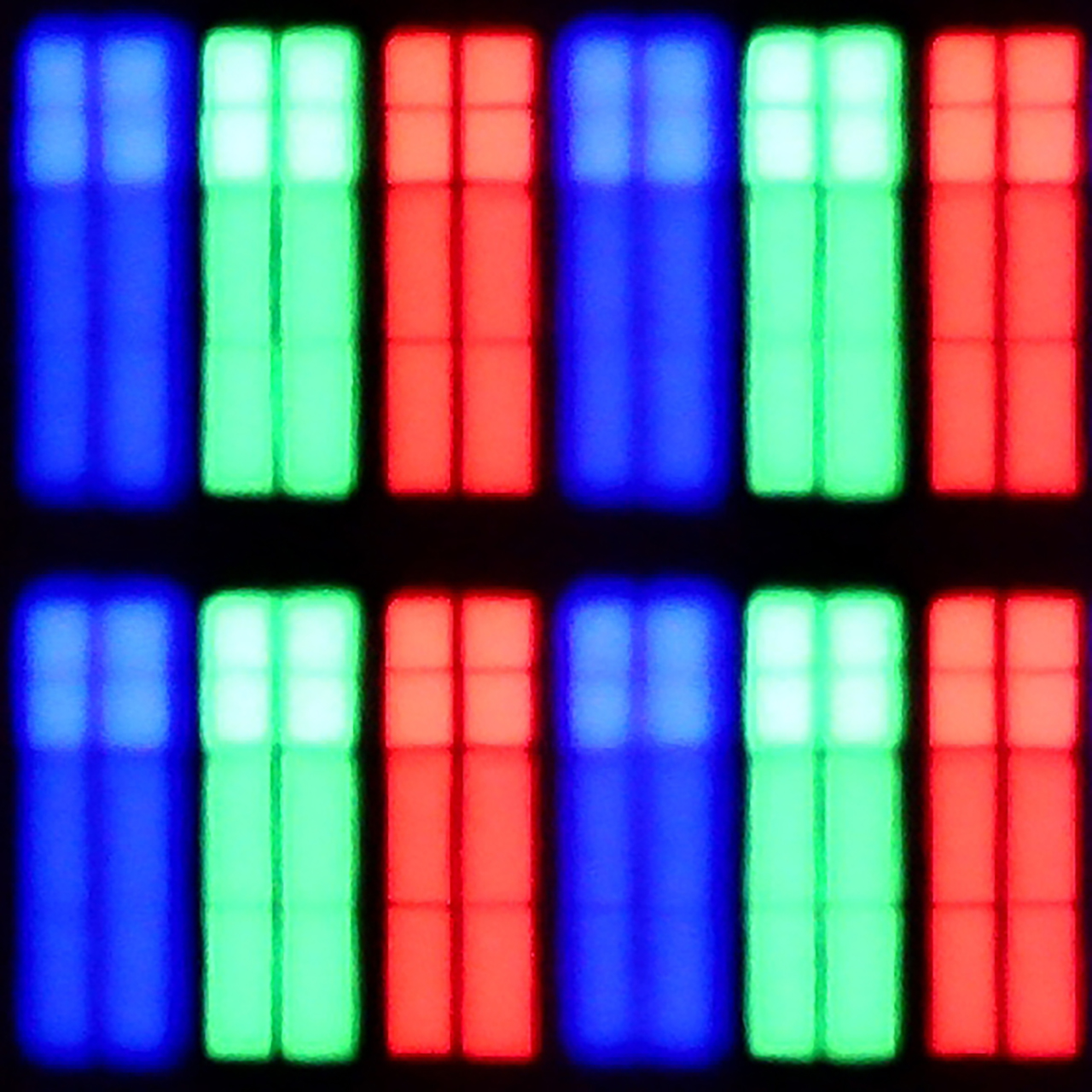
Panel uniformity and thermal imaging:

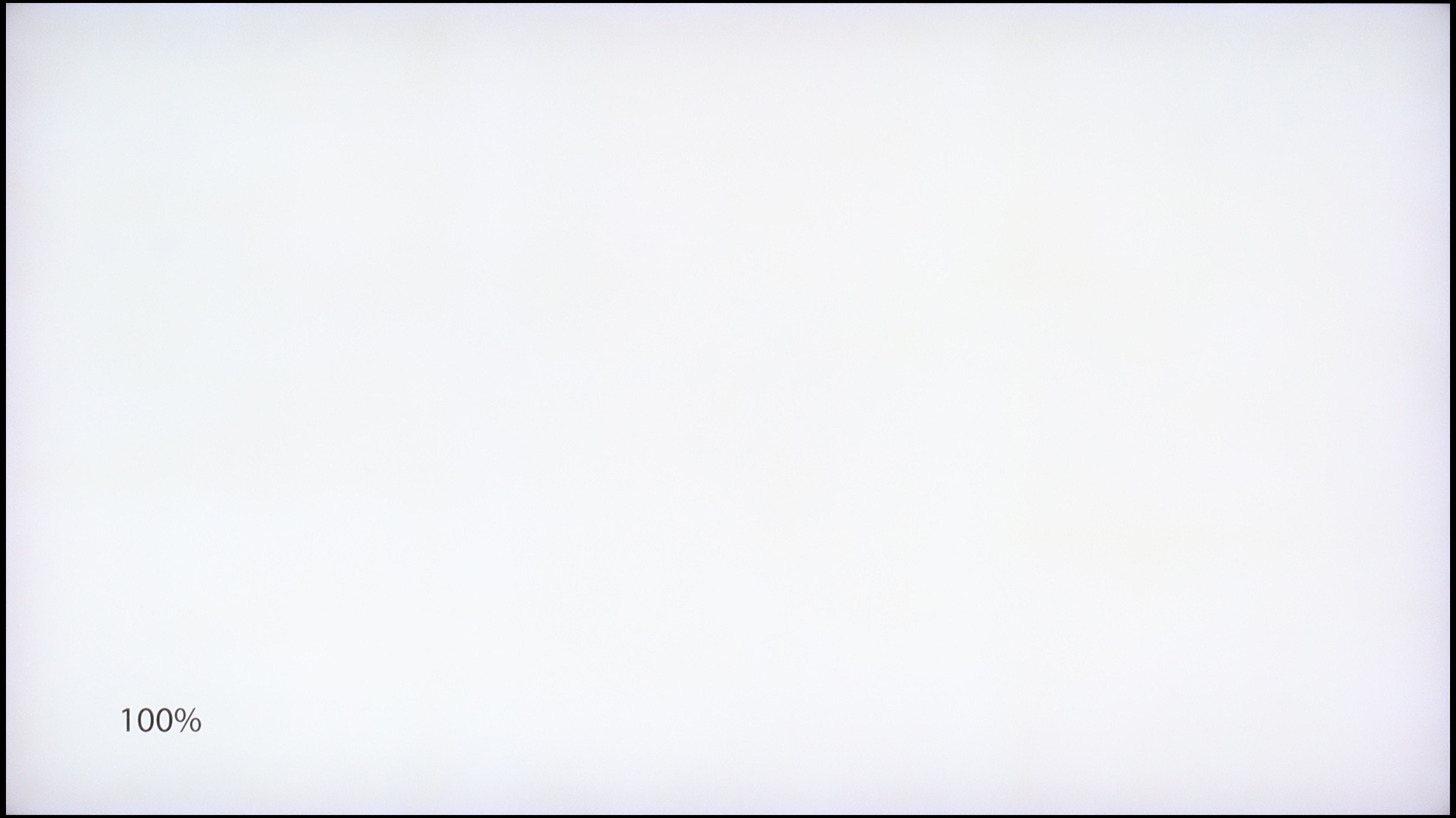
Samsung The Frame LS03D
Samsung QN80F
TV features
7.8/10
7.7/10
- HDMI inputs3 x HDMI 2.0, 1 x HDMI 2.1 40Gbps0 x HDMI 2.0, 4 x HDMI 2.1 48Gbps
- OutputsToslink (Optical audio), eARC (HDMI), ARC (HDMI)Toslink (Optical audio), eARC (HDMI), ARC (HDMI)
- Network InterfacesWi-Fi 2.4GHz, Wi-Fi 5GHz, Ethernet (LAN) 100MbpsWi-Fi 2.4GHz, Wi-Fi 5GHz, Ethernet (LAN) 100Mbps
- TV receptionDVB-T, DVB-T2, DVB-S, DVB-S2, DVB-CDVB-T, DVB-T2, DVB-S, DVB-S2, DVB-C
Classic features:
- Recording to USB (terrestrial TV)
- Recording programming
- Picture in Picture (PiP)
- RF remote control (no need to aim at the screen)
- Backlit remote control
- Teletext
- Audio only mode
- Bluetooth headphones support
- Simultaneous Bluetooth headphones & TV audio
Smart features:
- AirPlay
- Screen mirroring (Windows Miracast)
- Voice search
- Voice search in native language
- Ability to connect a keyboard and mouse




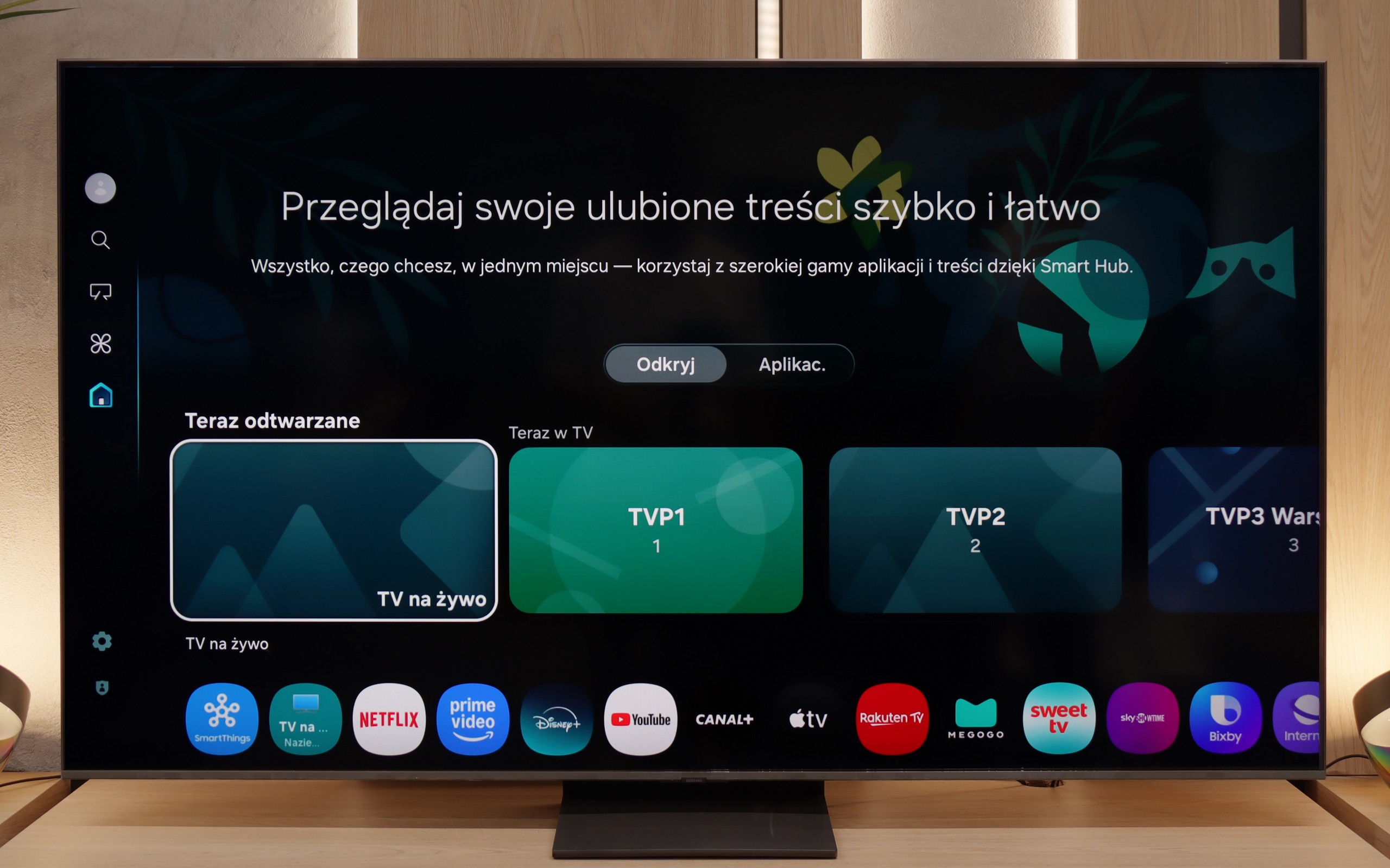
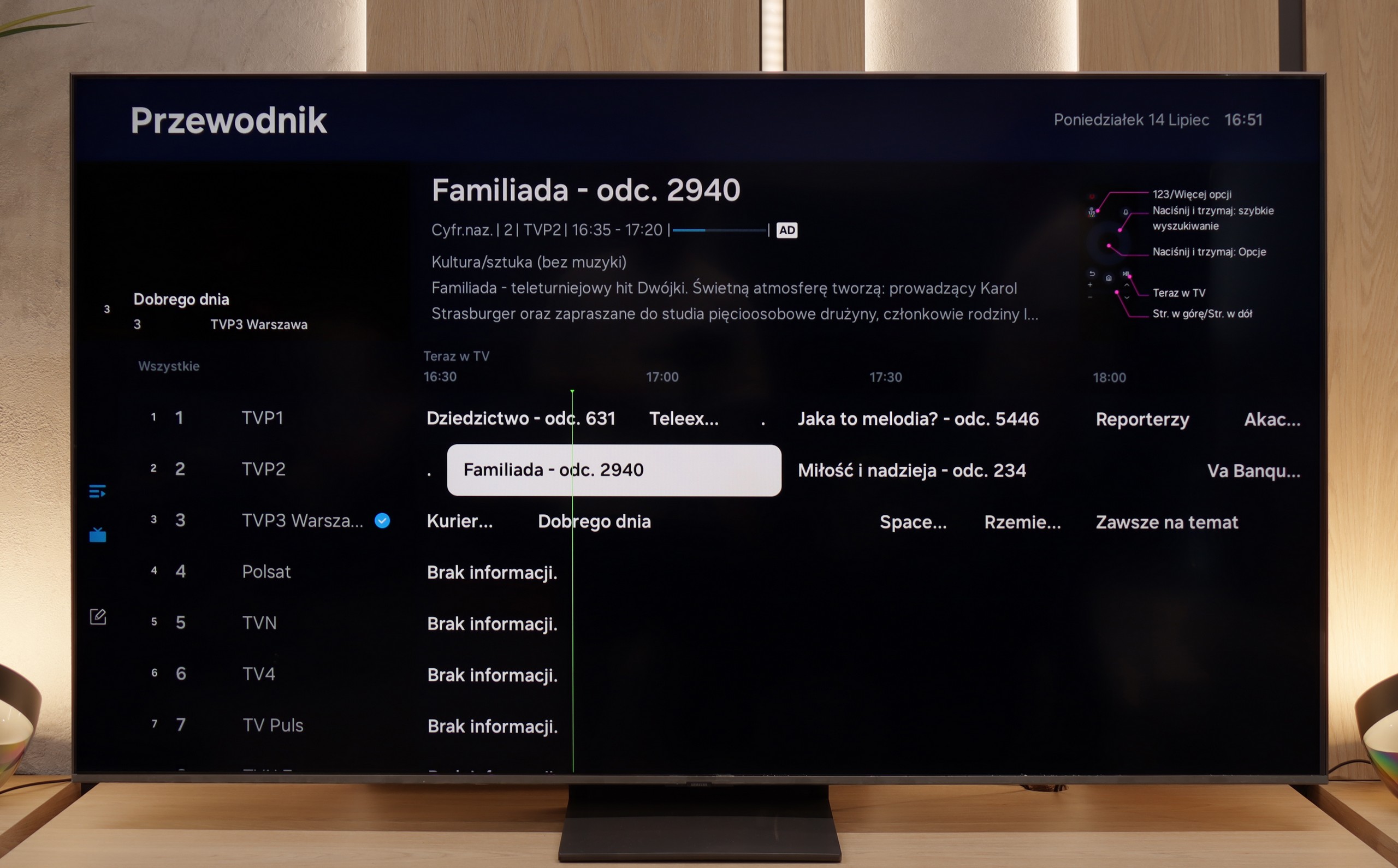
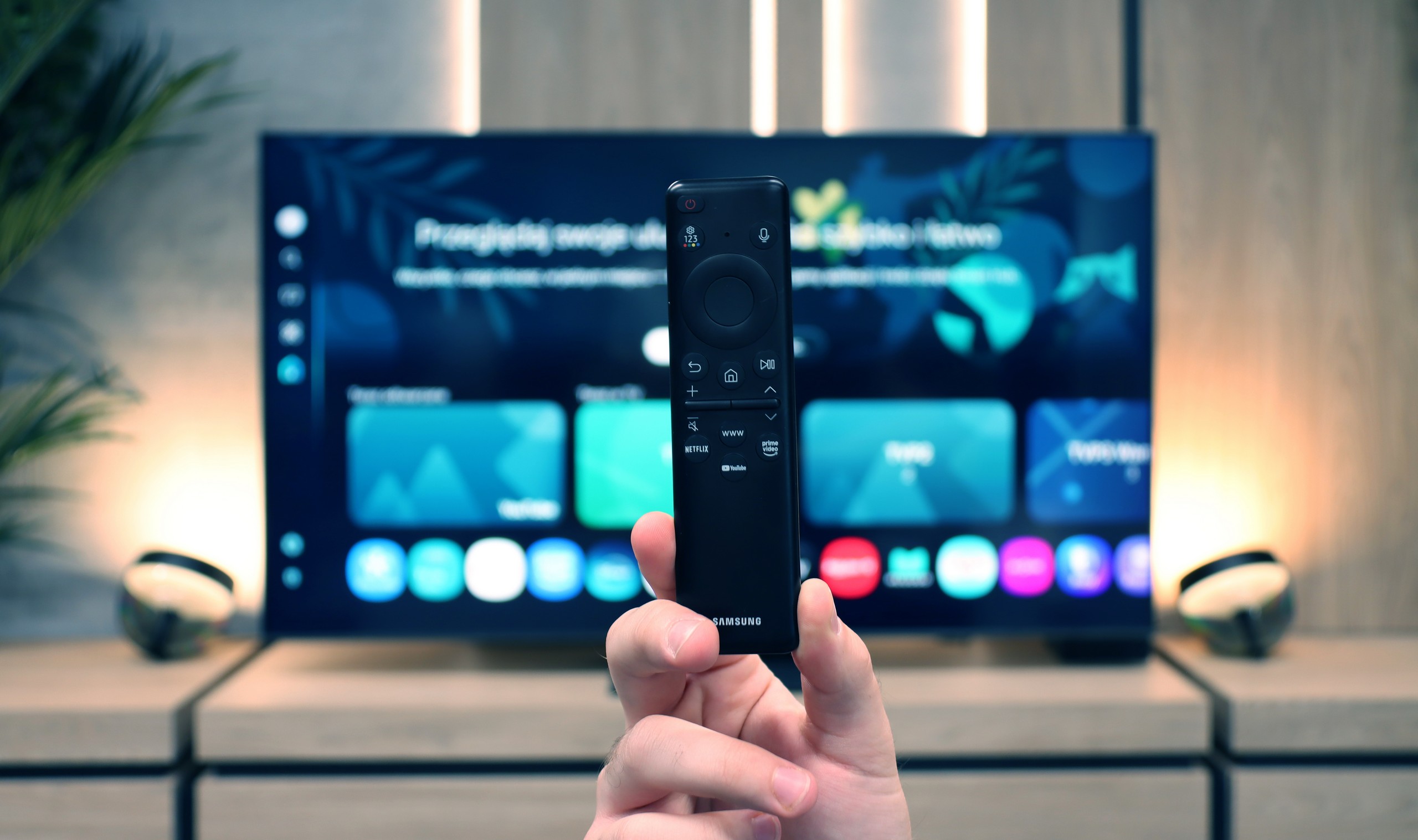
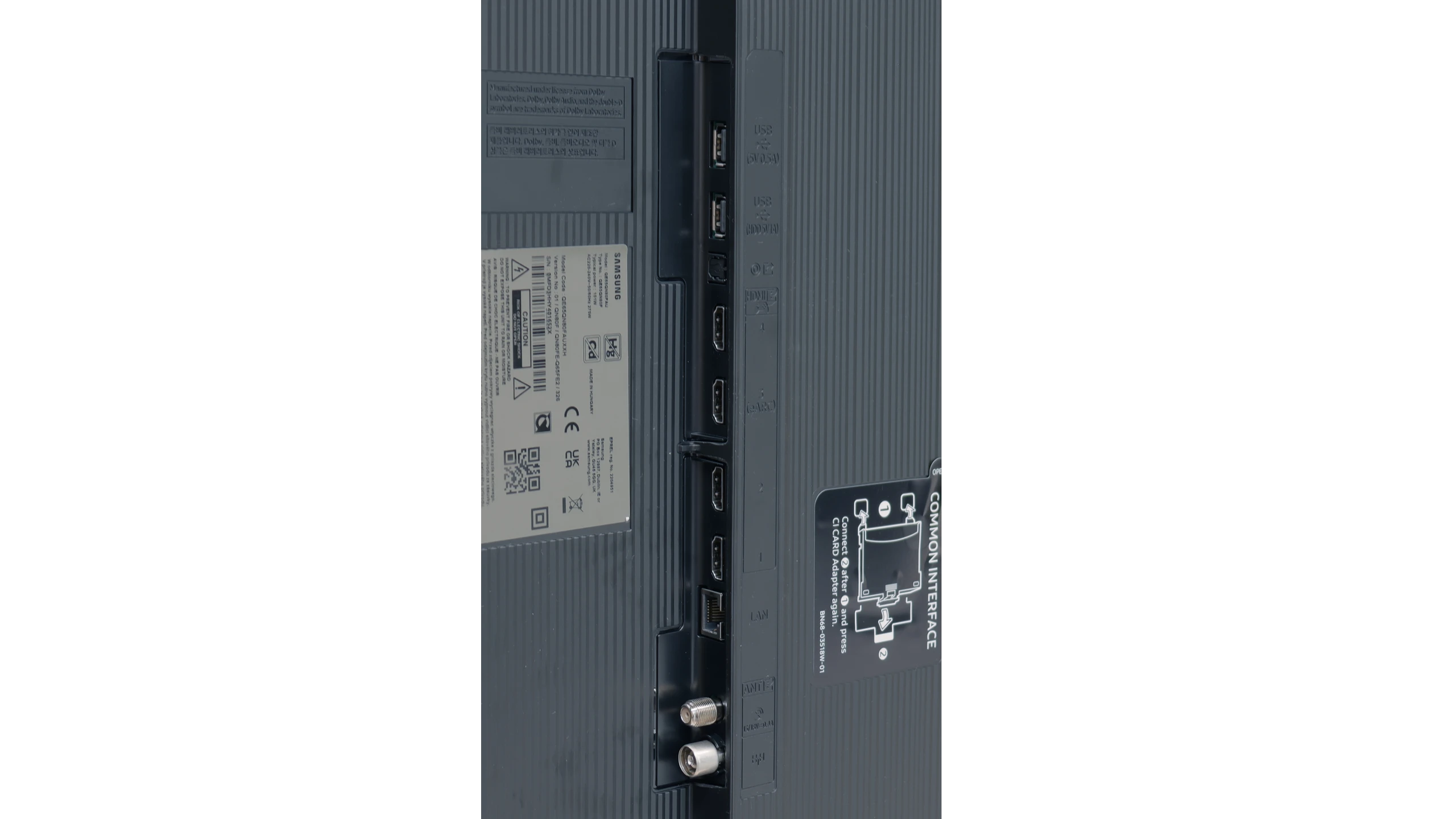
Samsung The Frame LS03D is a television that stands out from other models and is difficult to describe in a traditional way. Of course, it includes all the standard Smart TV features thanks to the Tizen system. The system operates responsively, is comprehensive, and offers a wide selection of applications. The remote control supports voice commands in Polish, and additional devices can be connected via Bluetooth – just like in many other televisions. But that's not the essence of this model.
The greatest strength of Samsung The Frame is its design. The "Art" mode allows you to display thousands of high-resolution images, which, combined with a matte display, look truly exceptional. The effect is surprisingly realistic and hard to compare with any other television.
The bezels may not be the thinnest on the market, but you can customise them in terms of colour and style to perfectly blend with your interior. (Sold separately) And while the bezels themselves are not ultra-thin, the entire construction is sleek and elegant. The wall mount, which is included (its value is approximately £80), also deserves special attention. With it, the television can be mounted practically flat against the wall, with no gap, which further emphasises the "picture" effect.
And what about the cables? Samsung thought of that too. The Frame has been equipped with a One Connect module – an external box where all devices are connected. Only one nearly invisible cable runs to the television, which transmits both the signal and power. The box can be easily hidden in a cabinet or behind furniture, which means nothing disrupts the aesthetics of the interior.
Samsung The Frame LS03D is more than just an ordinary television – it is a thoughtfully designed decorative element that combines the modern functionality of Smart TV with exceptional design and practical solutions. Although it lacks typical features such as USB recording or PiP, it is not a model created with a classic approach to television in mind. LS03D the frame is a television that is easy to love for its innovation, originality, and how wonderfully it fits into any interior.
SmartTV QN80F: Tizen
In terms of smart features, the QN80F has nothing to be ashamed of. On the contrary – Tizen is one of the richest operating systems when it comes to functionality. We have voice search, support for AirPlay, Miracast, and all the major streaming platforms at our fingertips. But Samsung's true advantage reveals itself in the smart home – SmartThings. Here you can not only synchronise light bulbs and vacuum robots but also integrate devices from other manufacturers, thanks to support for the Matter standard. And suddenly it turns out that the QN80F can serve as a home command centre. There is just one "but" – Tizen is a closed system, so we may not find a few lesser-known applications. Although in practice it has everything that 99% of users need.
Classic TV features:
When it comes to classic features, it is just as good – well, almost. The QN80F supports picture-in-picture, which is a rarely seen but still useful PiP function. We can easily find the EPG, good old teletext (yes, it works!), and the ability to connect external devices via Bluetooth – whether it's headphones or a soundbar. Unfortunately, there is a lack of the option to record to USB from the built-in tuners. This is a minor setback, especially since the competition at a similar price increasingly offers this feature. It may not be a must-have function, but since everything else works so well, it's a pity that this feature is missing a dot over the i.
Playing files from USB
9.1/10
9/10
Supported photo formats:
Maximum photo resolution:

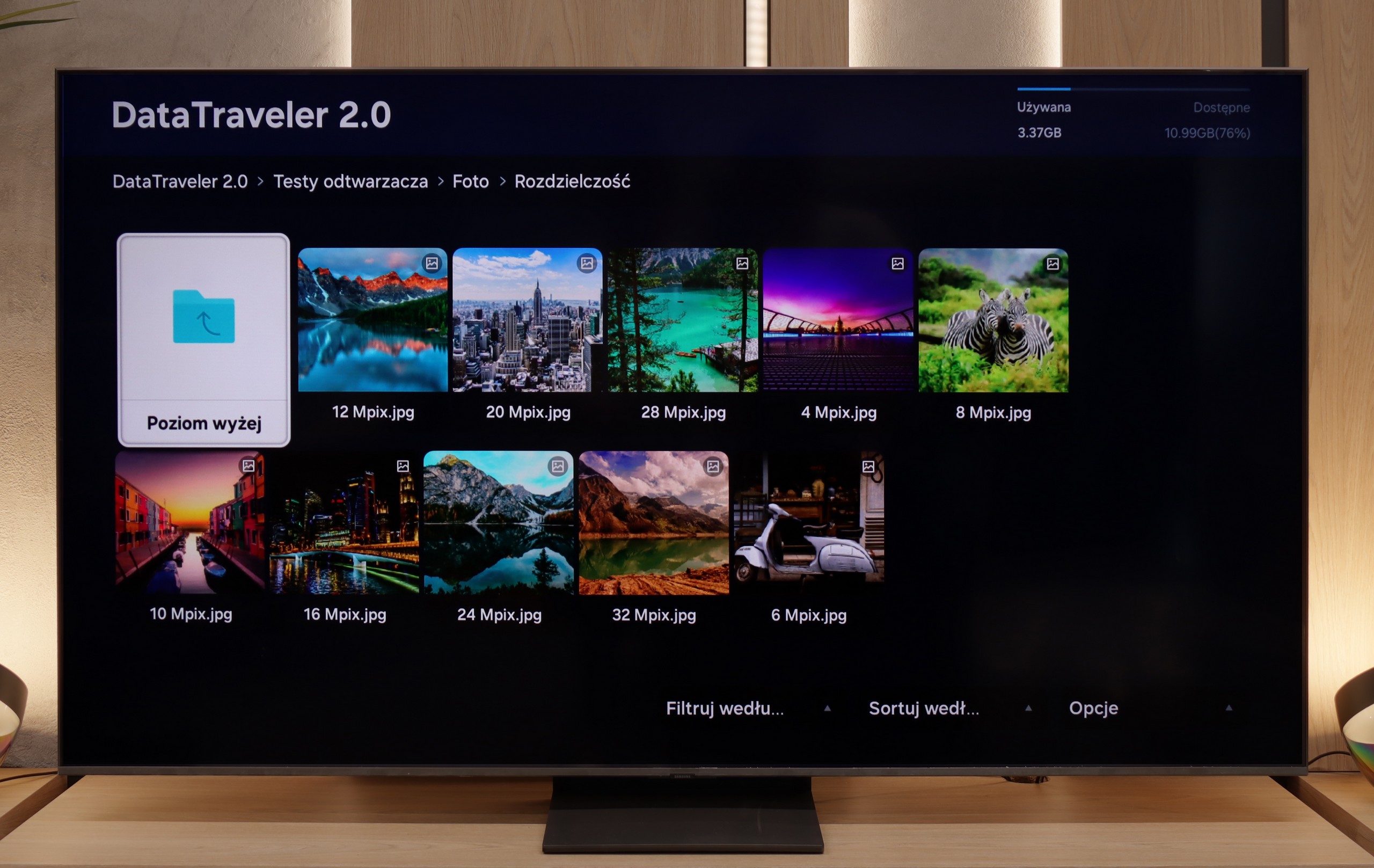
The built-in media player in Samsung The Frame handles most popular video and audio formats without major issues. Video files, even those with subtitles that we have added, play smoothly and without interruptions. The same goes for audio files – here too, there are no significant surprises. The situation is somewhat worse when it comes to handling photo formats. The built-in player has certain limitations and does not support all possible types of graphic files. However, nowadays, most people use wireless photo transfer, so for many users, this will not be a major problem.
The built-in media player in the QN80F handles most popular video formats – from classic MP4 to slightly more demanding containers. It may not be a powerhouse like VLC, but it's perfectly adequate for home use. The situation is less impressive with photographs – here, unfortunately, it's rather modest. Support is mainly limited to the JPG format, but hey, at least that's the most important one 👌. During our tests, there was also a slight issue with subtitles. The QN80F could only handle the simple text format .txt – other, more advanced formats (like .srt or .sub) were unfortunately not recognised.
Apps
8.7/10
8.7/10














































Sound
5.8/10
6.7/10
- Maximum volume-87dB
- Dolby Digital Plus 7.1
- Dolby True HD 7.1
- Dolby Atmos in Dolby Digital Plus (JOC)
- Dolby Atmos in Dolby True HD
- DTS:X in DTS-HD MA
- DTS-HD Master Audio
The sound on the Samsung The Frame is… well, quite average. The slim design of the television, while looking impressive, doesn’t allow much space for decent speakers. As a result, the sound is flat and lacks dynamism – exactly like most televisions in this category. Samsung is clearly aware of this, as it offers a special series S of soundbars, specifically created for its "lifestyle" televisions, which includes the The Frame.
For a television of this class, the QN80F sounds surprisingly good. It supports the Dolby Atmos format, which is worth noting, as this is still not a given in many models in this range. Unlike the thinner QN70F, here you can even feel a slight bass – all thanks to the thicker casing, which simply provides more space for the sound to "breathe." It's perfectly adequate for everyday viewing and series, and with the right settings, one can even be tempted to listen to music without the need for external equipment. However – as is often the case with Samsung, there is unfortunately a lack of support for the DTS:X format, so if we are using audio devices that support this format, we will first need to connect them to the amplifier and only then to the television.
Acoustic Measurements
No acoustic data
87dBC (Max)
75dBC


